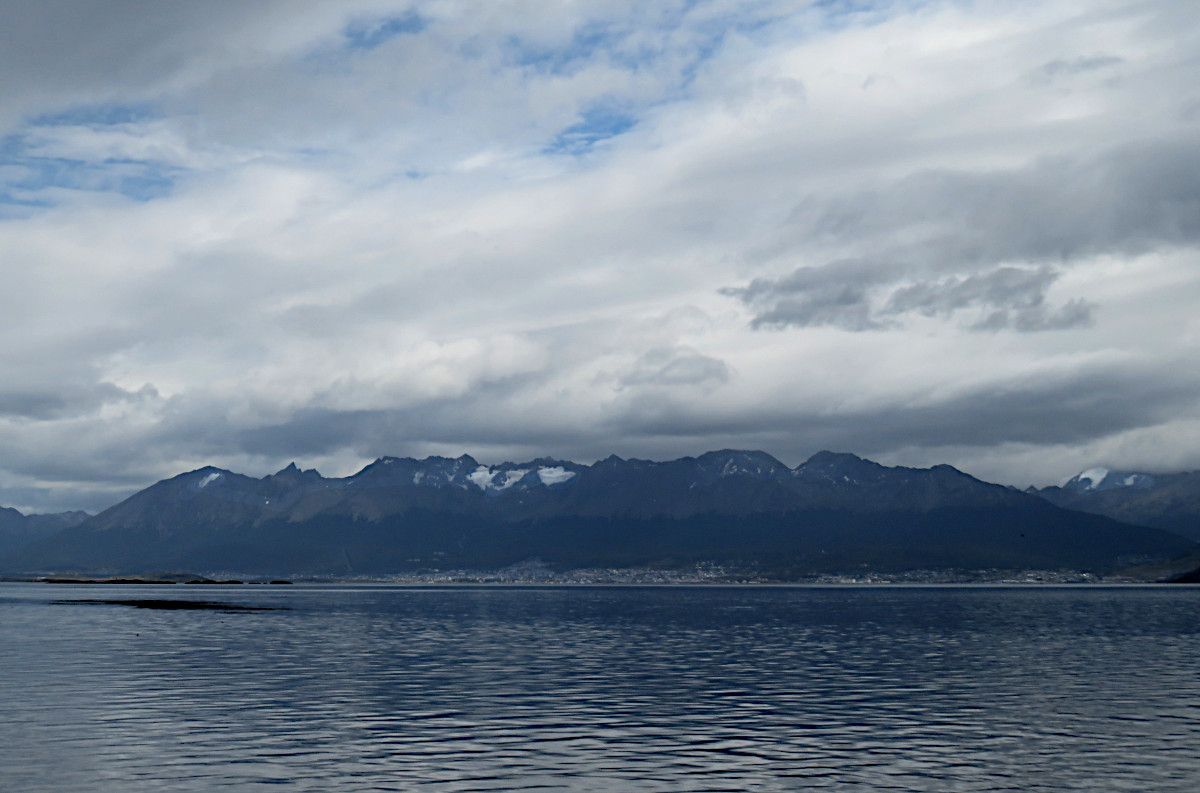Though walking among the penguins on Martillo Island is the highlight, the excursion is a whole day affair. The group meets at the Ushuaia harbor. From there, it’s about an hour and a half bus ride to Harberton Ranch. From the ranch pier, visitors board a Zodiac for the short ride across the harbor for an hour walking among the penguins. The Zodiac returns to the pier, where they board an excursion ship for the return voyage to Ushuaia.
The previous episode described the hour on Isla Martillo with the penguins. This episode covers the rest of the excursion – some pretty cool stuff!
The bus makes one stop. Remember the road sign the Idiots described in a previous episode?
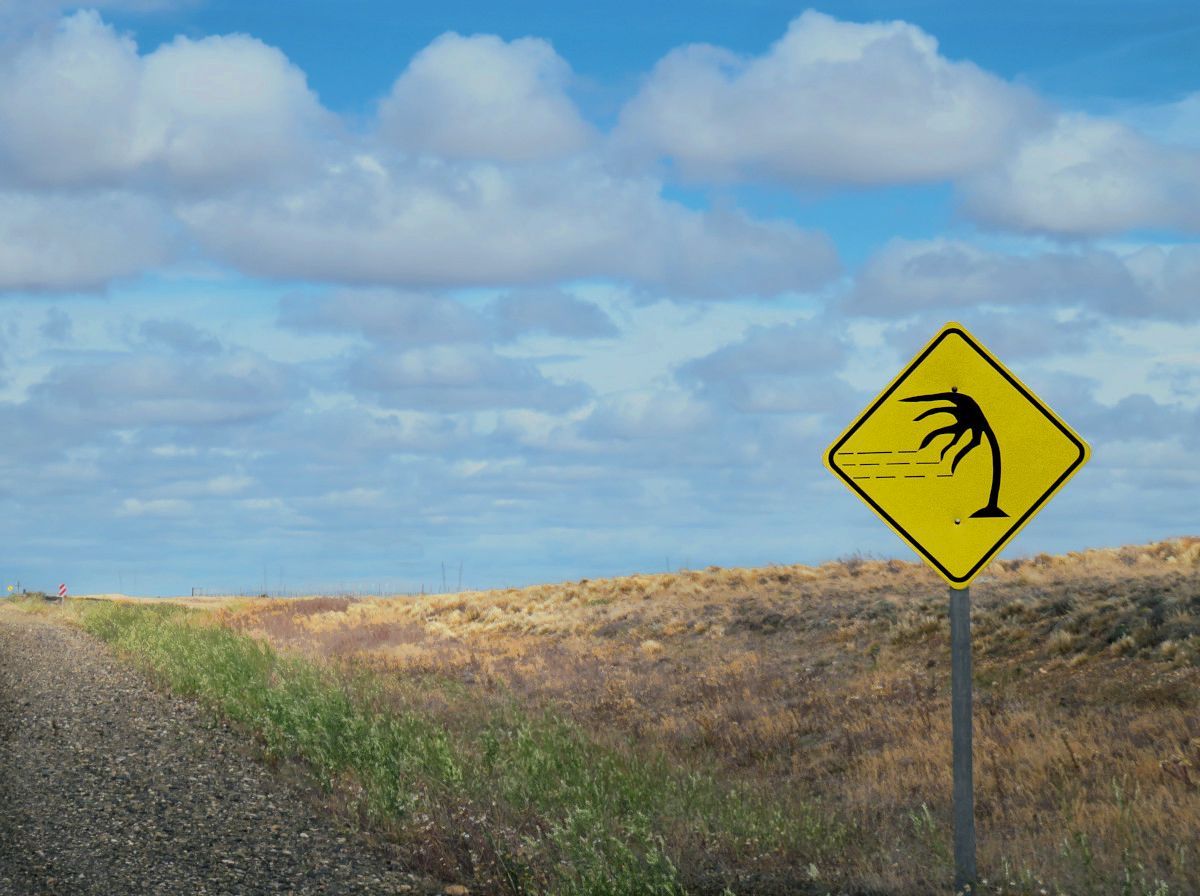
There is a name for that stylized symbol warning motorists of the potential for strong and continuous winds. They call it a flag tree. It is not just a mental construct. Flag trees are real.
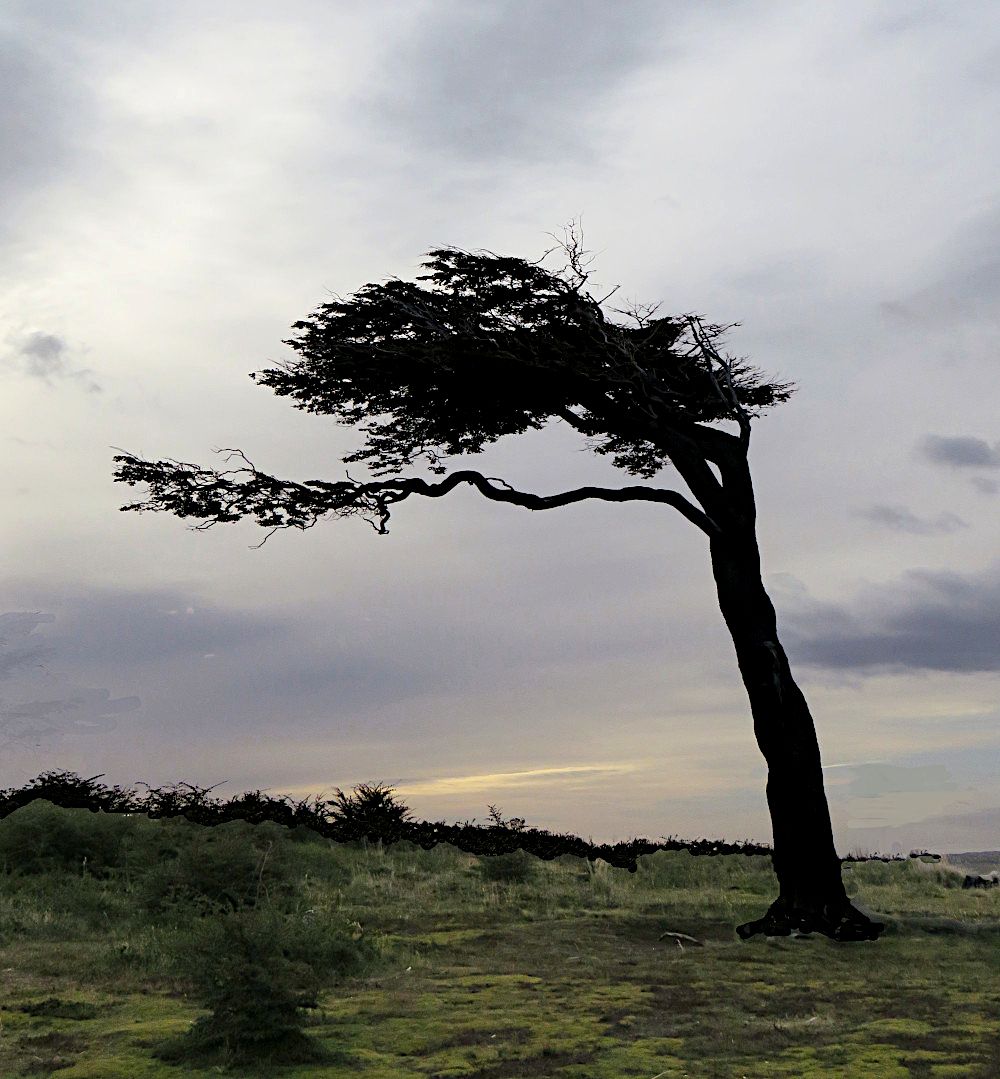
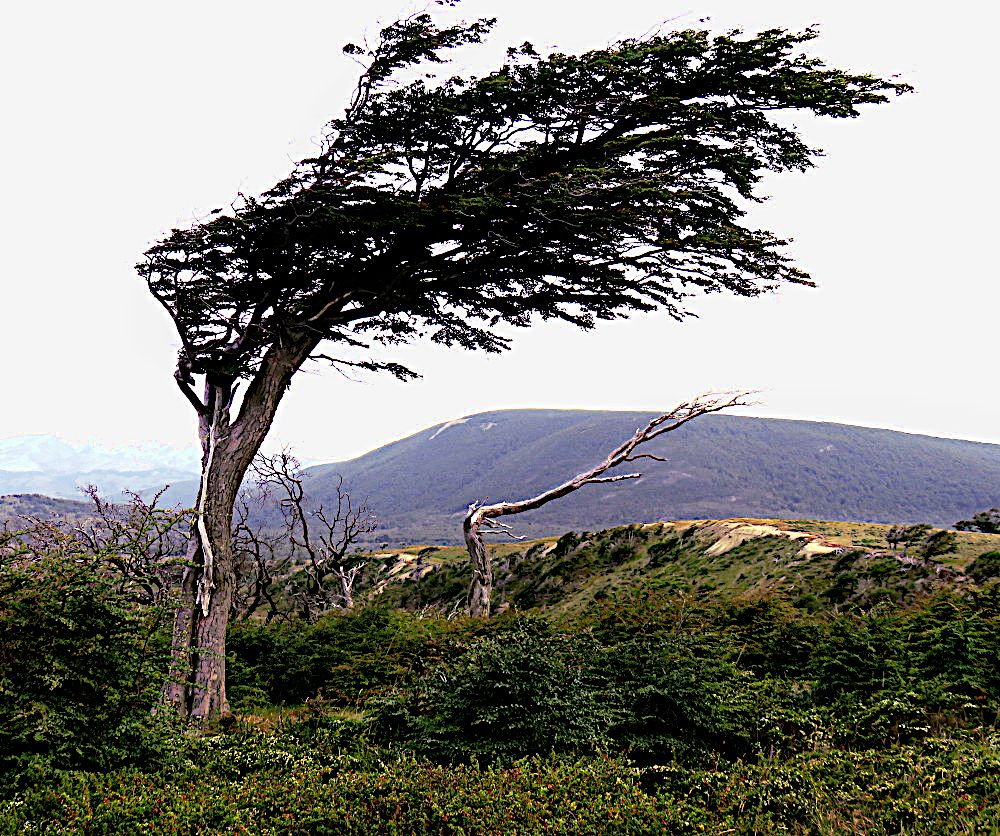
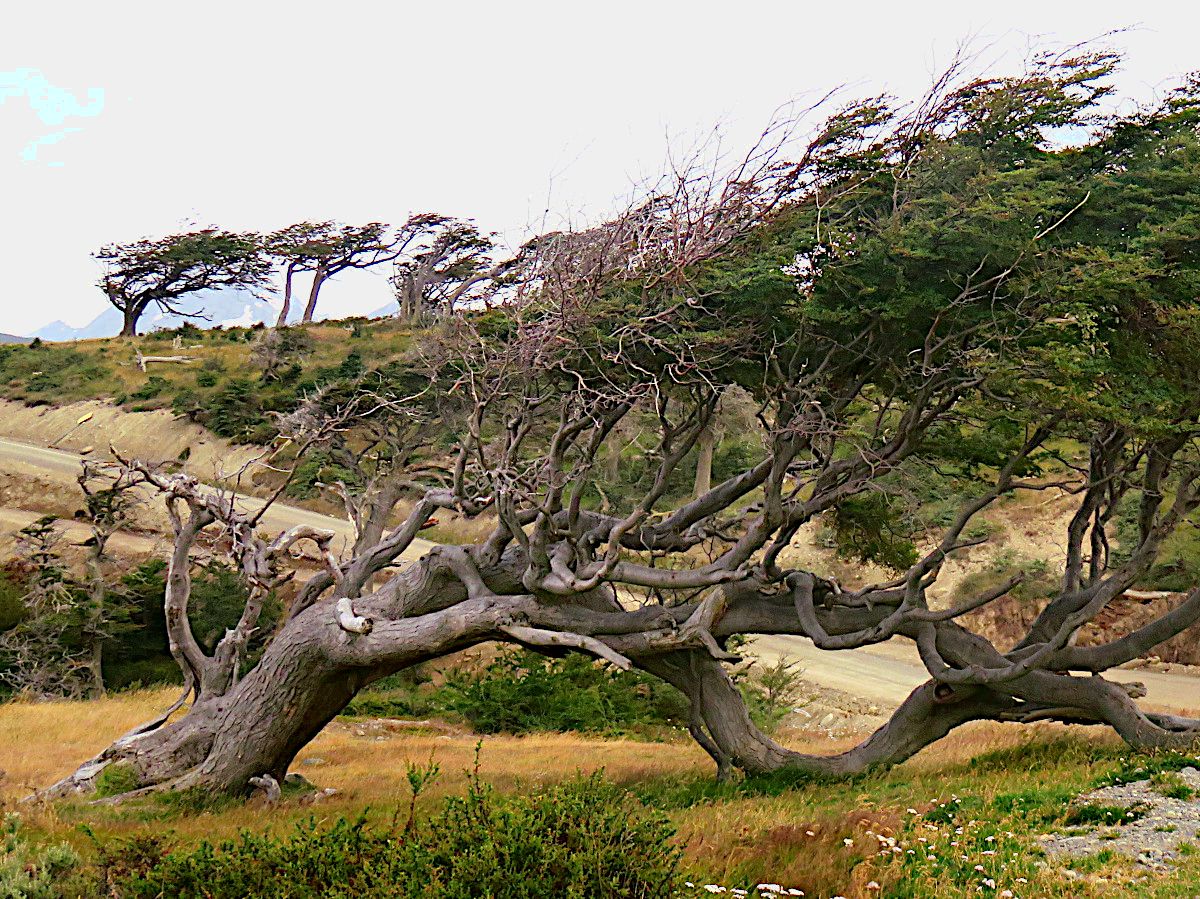
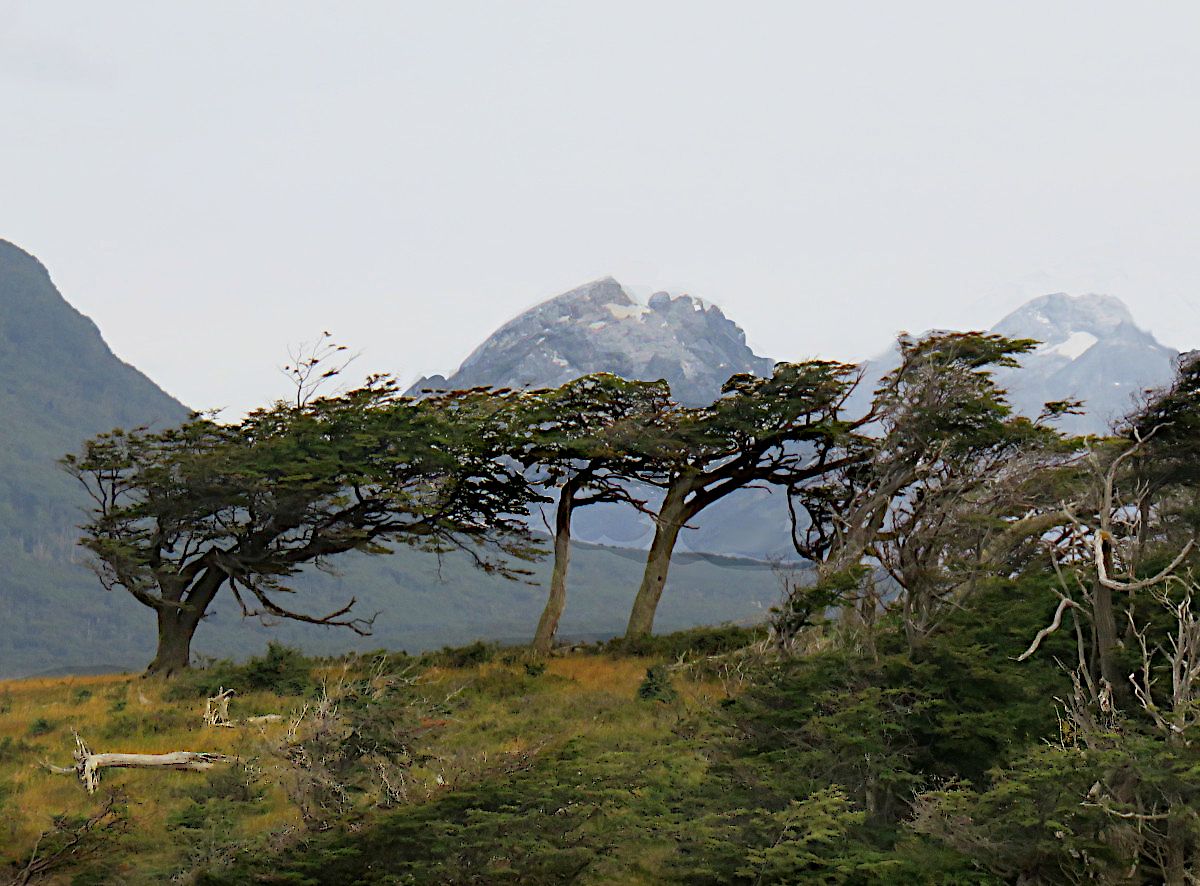
The Harberton family has an interesting history in Tierra del Fuego. Thomas Bridges got his name from his humble origins – he was found as an abandoned infant on a bridge somewhere in England. He was eventually adopted by an Anglican missionary. In 1856, at age 13, his family took a mission post in the remote Maldives – aka the Falkland Islands. In 1870 he took his young wife and created a mission at what is now Ushuaia – the southernmost city in the world.
Bridges was the first European permanent settler in this remote area. It wasn’t an easy place to live and raise a family. One early resident described the weather as “65 unpleasant days per year along with 300 days of rain and storms.
Bridges did interesting work, establishing relations with the local indigenous people, the Yaghan, and he compiled a 30,000 word grammar and dictionary of their language. He was already well established when Argentina finally built a base and brought in settlers in 1884. Argentina granted him citizenship and a tidy parcel of land – 60,000 acres and 24 miles of shoreline - that he named for his wife’s birthplace in England, Estancia Harberton. The sheep and cattle ranch has been in the family ever since.
The irony of his work with the Jaghan is that he knew their civilization was under pressure but probably didn’t realize how rapidly they were bound for extinction. There were an estimated 3000 Yaghan in 1850. By 1916 there were only 100. Today there is only one living full-blooded Yaghan person… "Abuela" (grandmother) Cristina Calderón.
The Yaghan primarily succumbed to European diseases. The Selknam (Ona) people were initially safer as they lived inland and were somewhat insulated from European contact. But when gold was discovered, a gold rush occurred and sheep farms were developed – and as hunter-gatherers the cultural conflict was too great. The outsiders called them “Chunkies” and launched a full-on effort to exterminate them. They were shot on sight… and at times there was even a bounty paid for every native shot. The settlers poisoned beached whales, a primary source of food for the Selknam. In 1973… about one hundred years after Bridges established his mission at Ushuaia… the last Selknam person died.
The ranch is still in the family, owned by the great-grandchildren of Thomas Bridges, and it is managed by one of the great-grandsons. The sheep were phased out in the 1990s, but they still run cattle on the estancia. It was declared an Argentine National Historical Monument in 1999. They have found another lucrative market similar to running cattle – running tourists.
Estancia Harberton owns Martillo Island and thus has near-complete control of the penguin colony. No one can stop other tour groups from getting close to the island, but only one company has the contract with Harberton to allow actually walking among the penguins. The Idiots are glad they committed the time and money for the full day excursion instead of trying to elbow their ways to the ship railing to try to get views and photos.
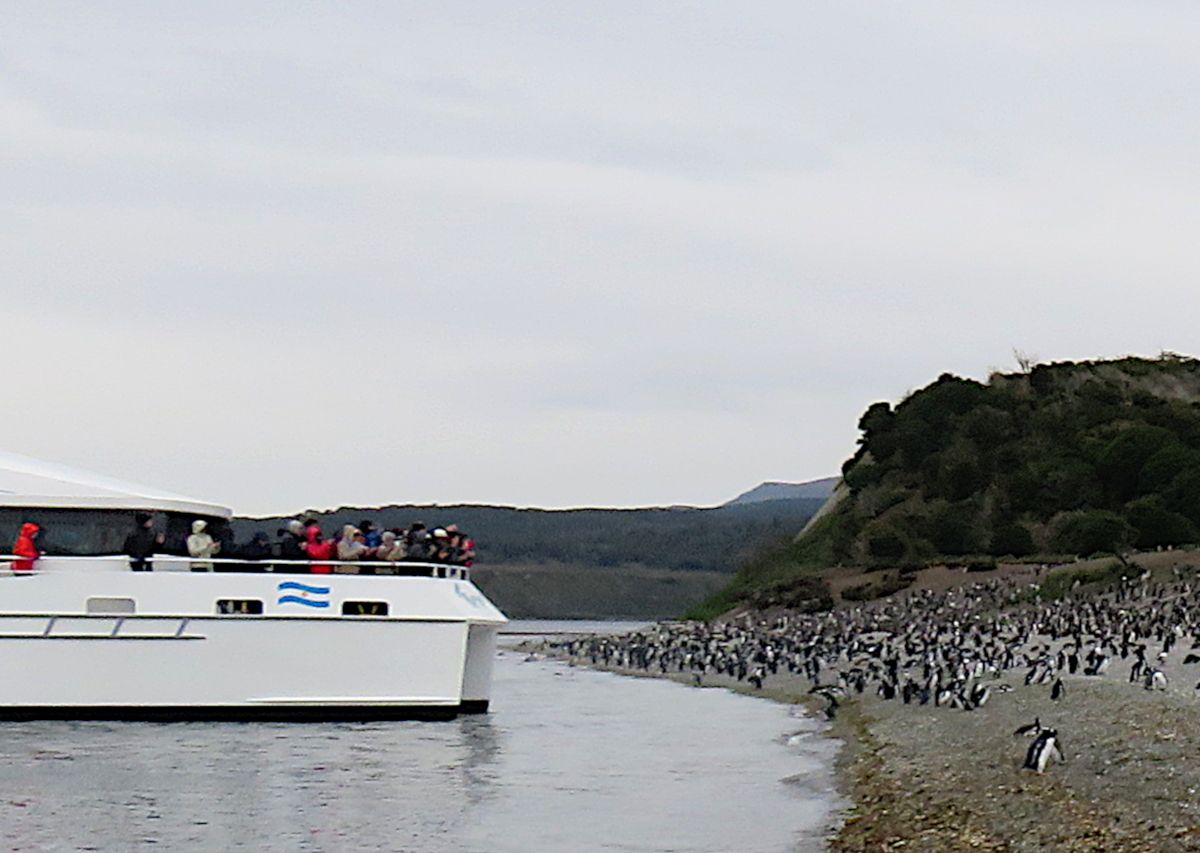
Marine researchers have found Harberton to be a handy base and there are now permanent research facilities, including a small museum.
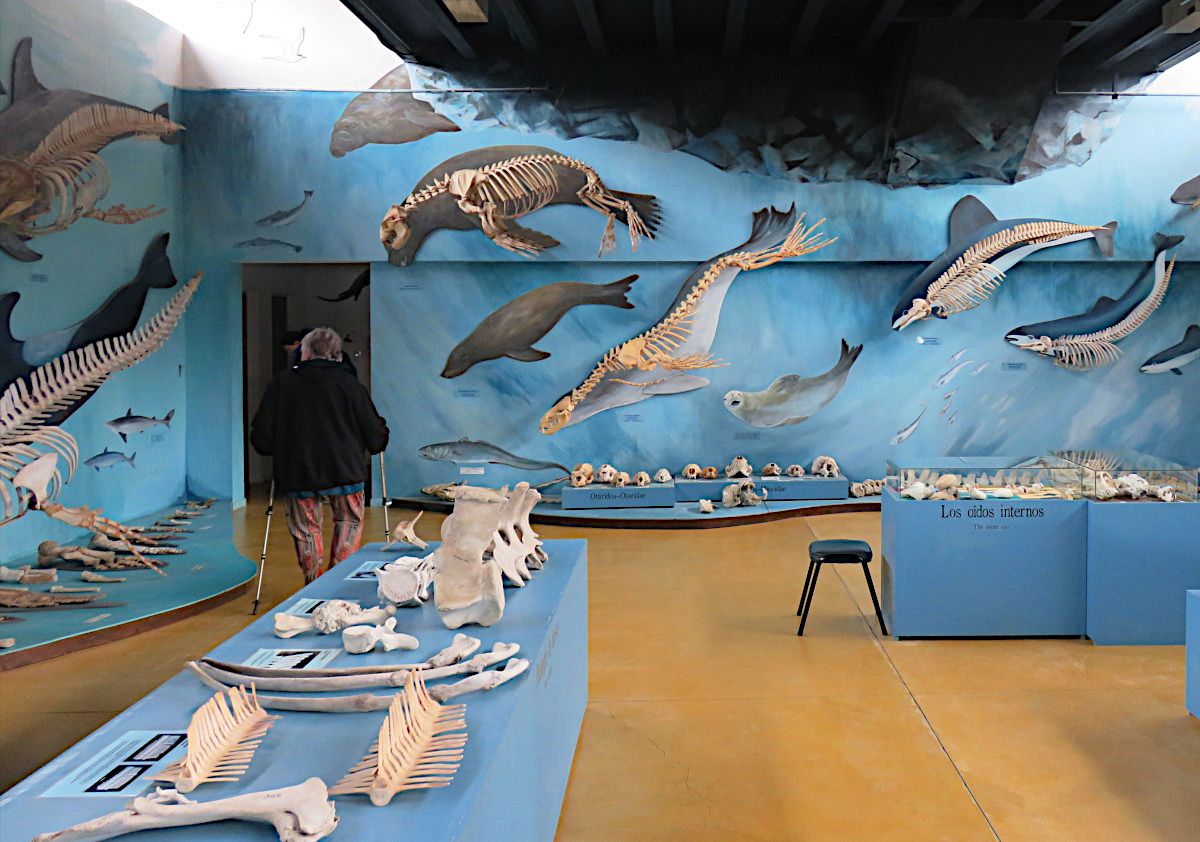
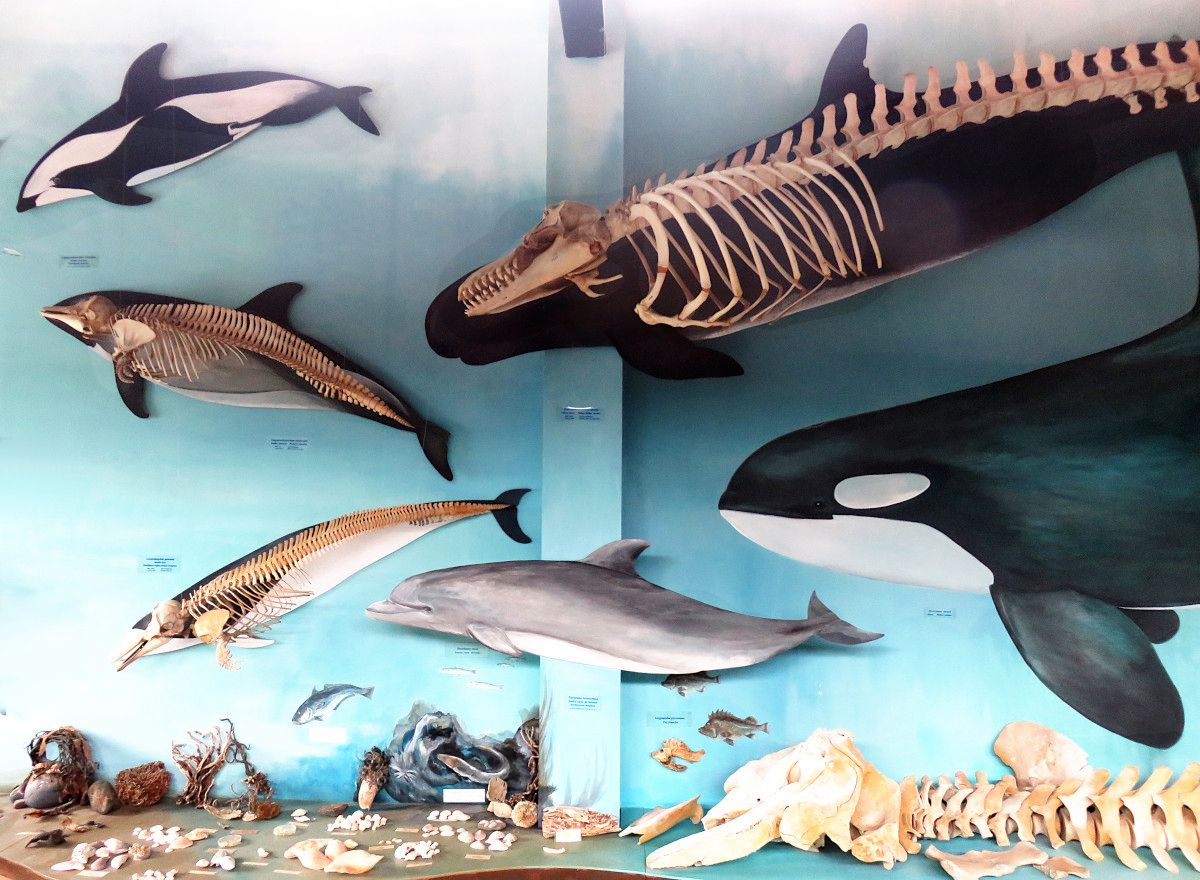
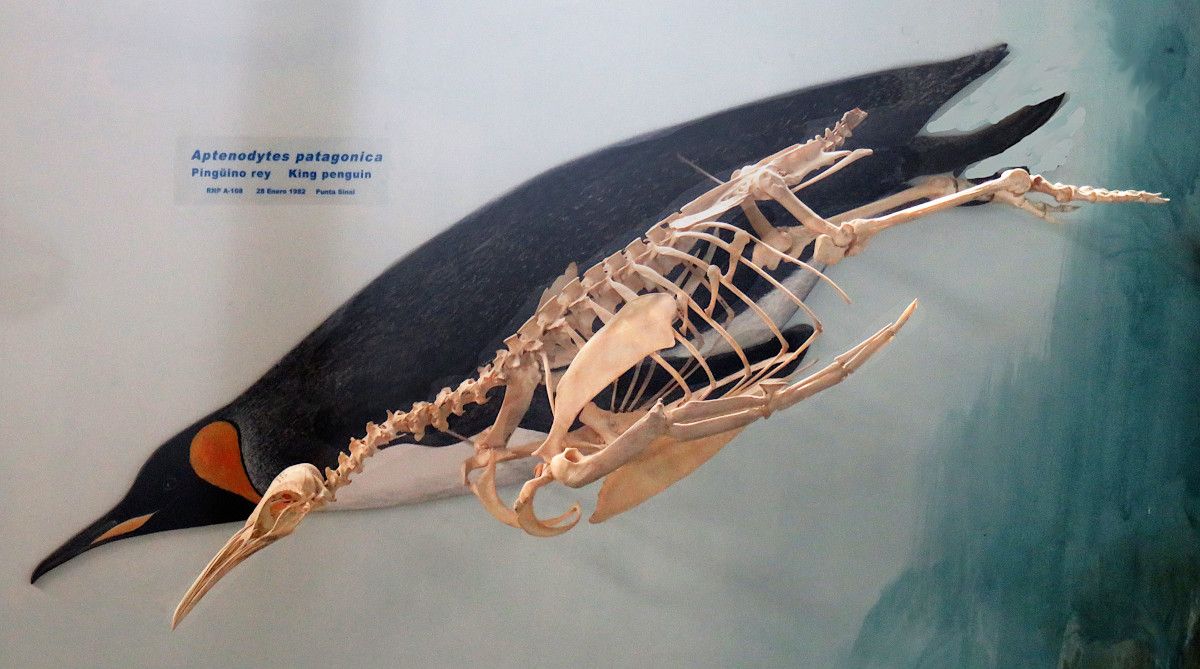
The Beagle Channel is not a benign environment. The constant wind, rain, and storms at this last stop on the way to Antarctica are hard on plants, animals, structures… and humans. The Idiots wondered how this little remote museum could get so many skeletons to display. The answer: Nature provides. Just walking along the water’s edge, the Idiots saw numerous shells and bone fragments. Researchers can find and “prepare” complete animal skeletons for research and museum installations.
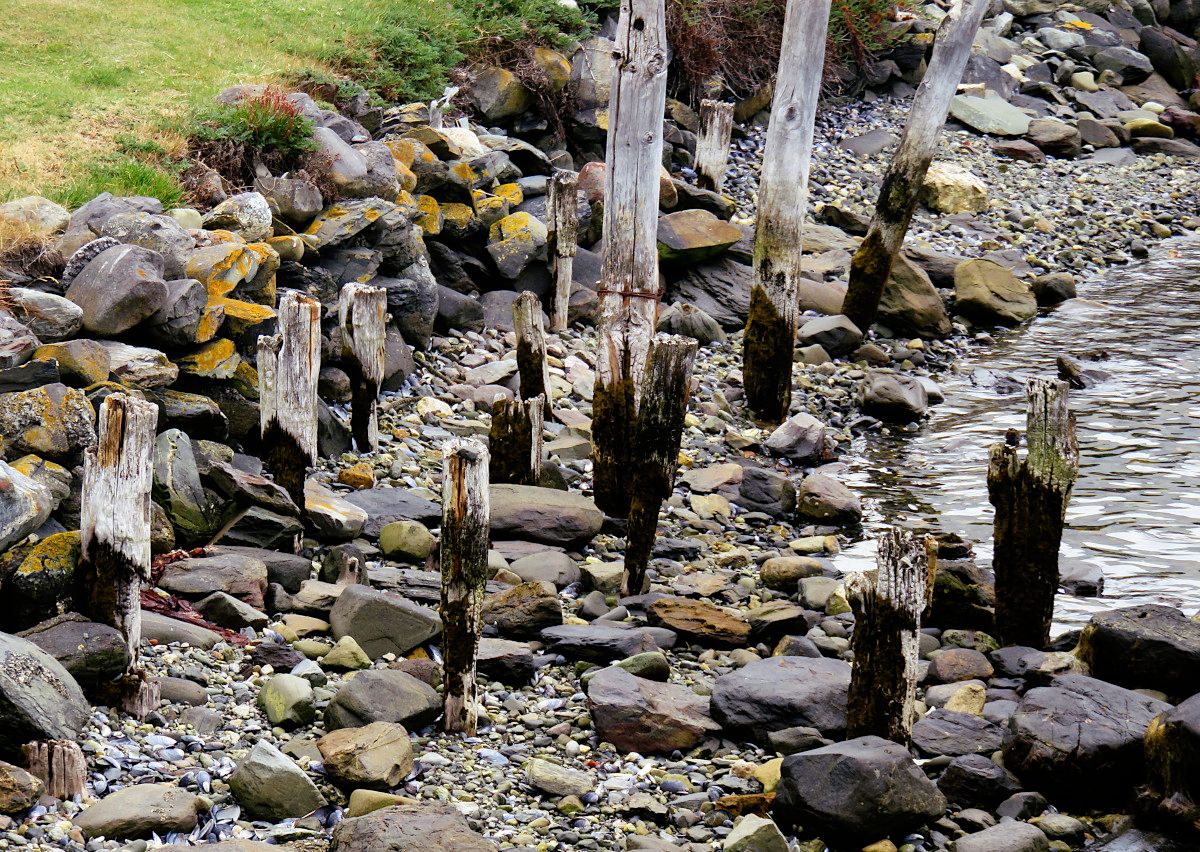
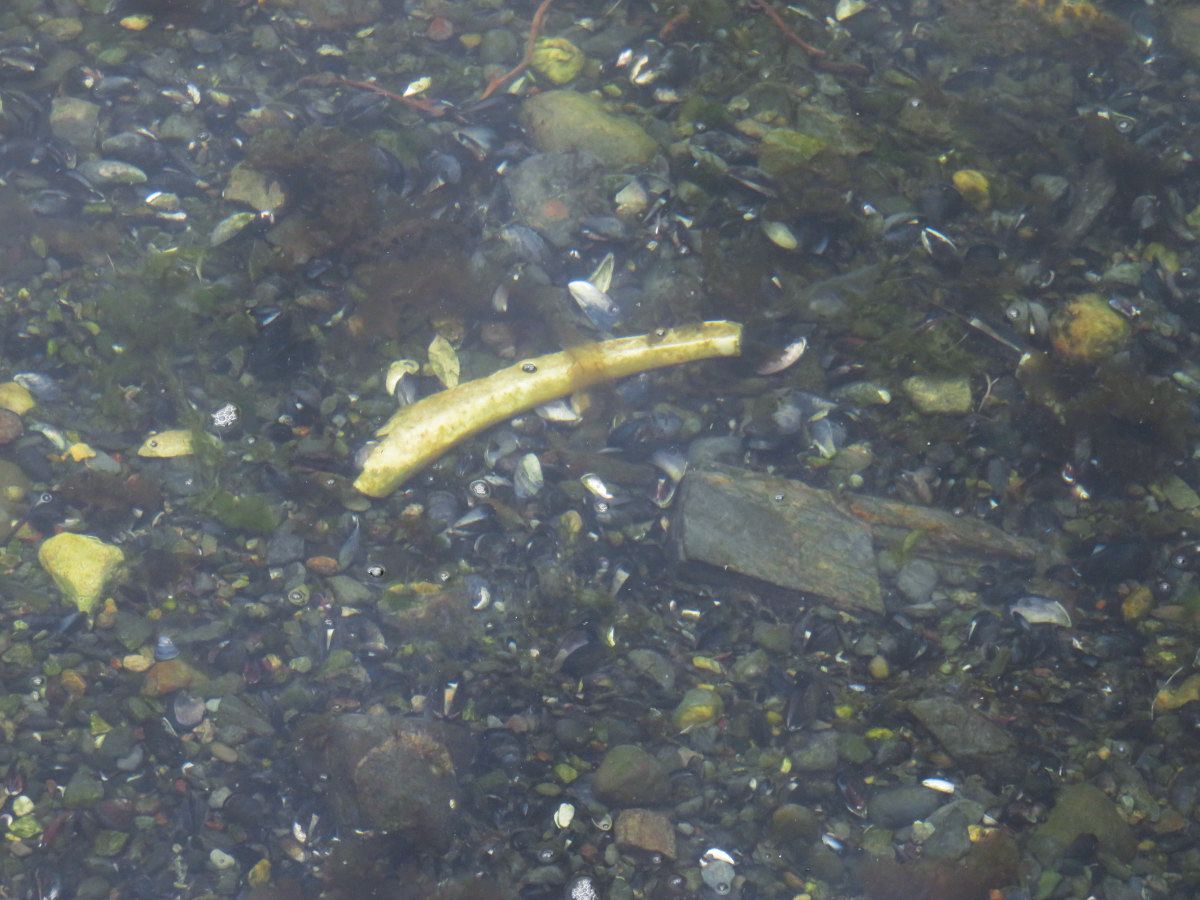
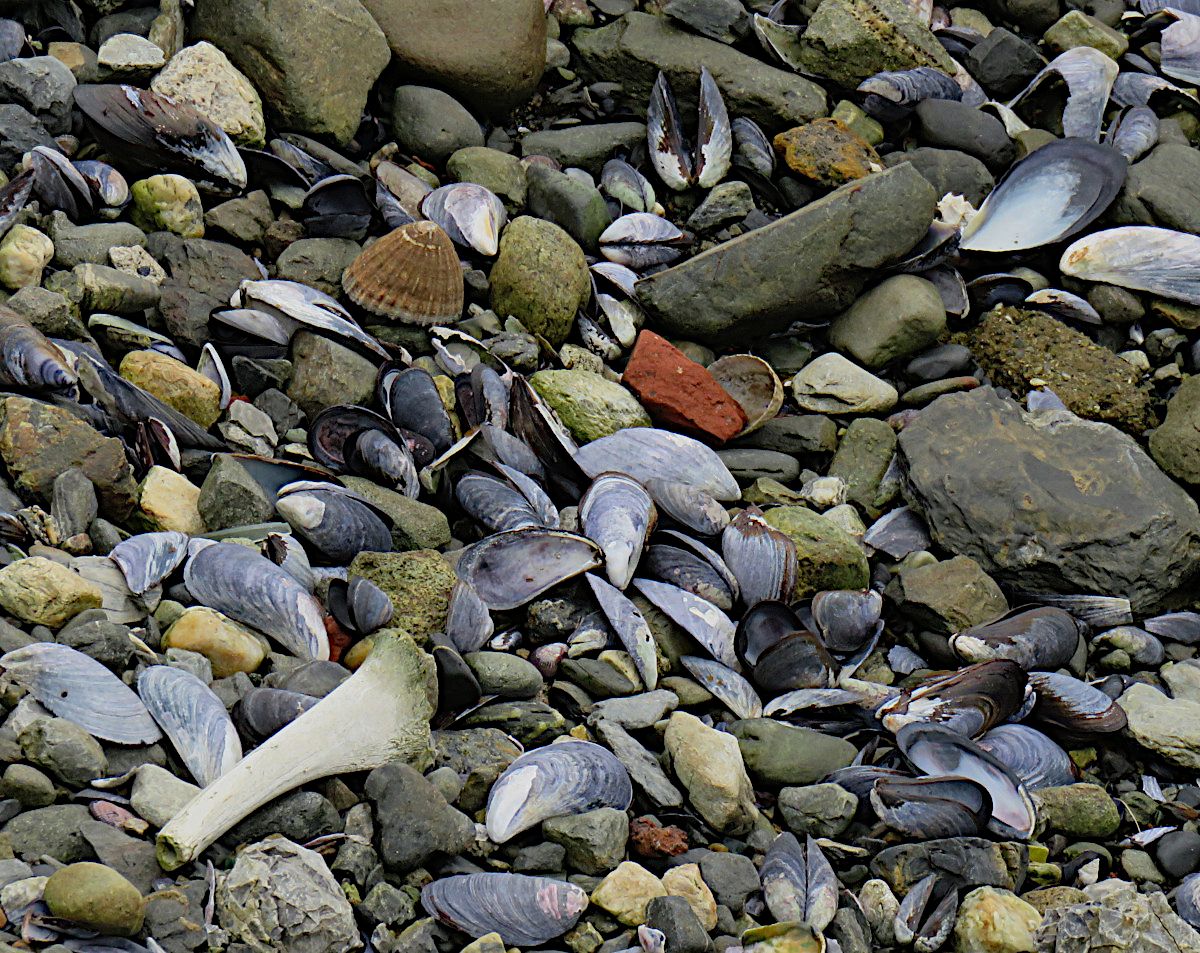
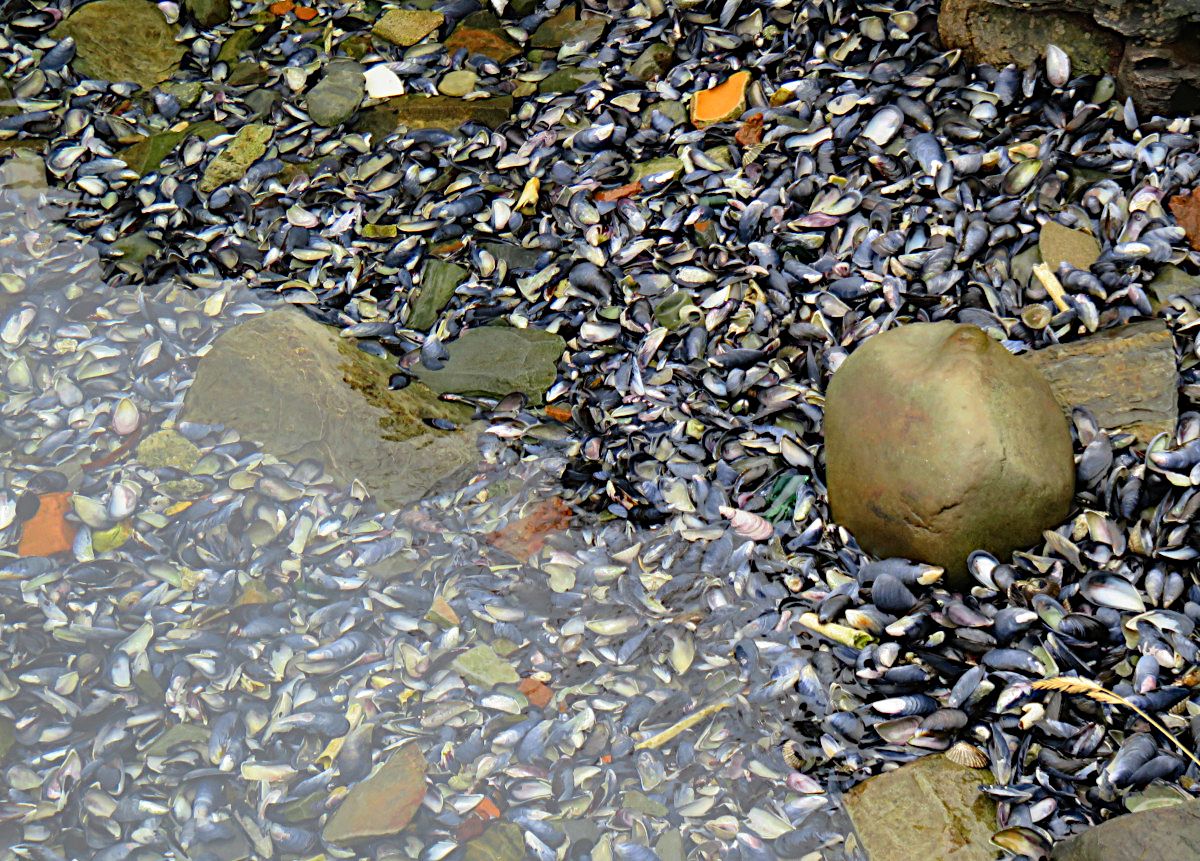

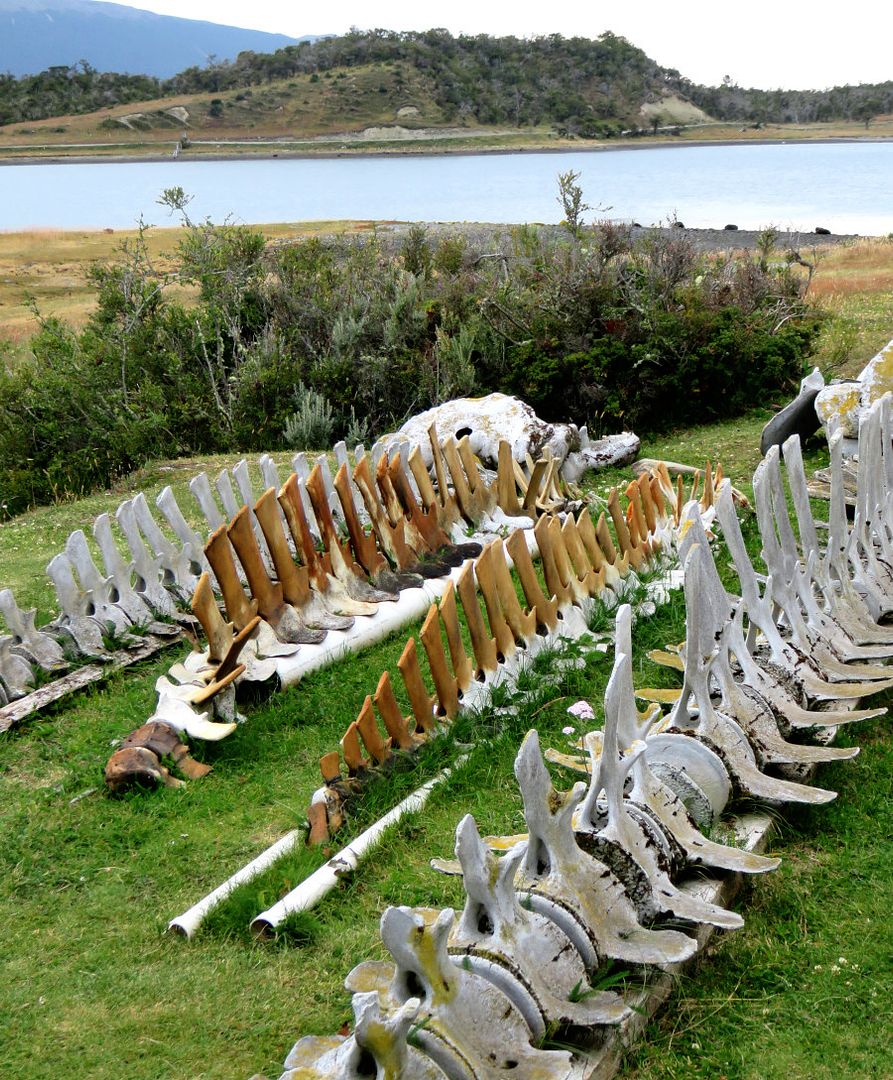
A natural sculpture… praying hands…
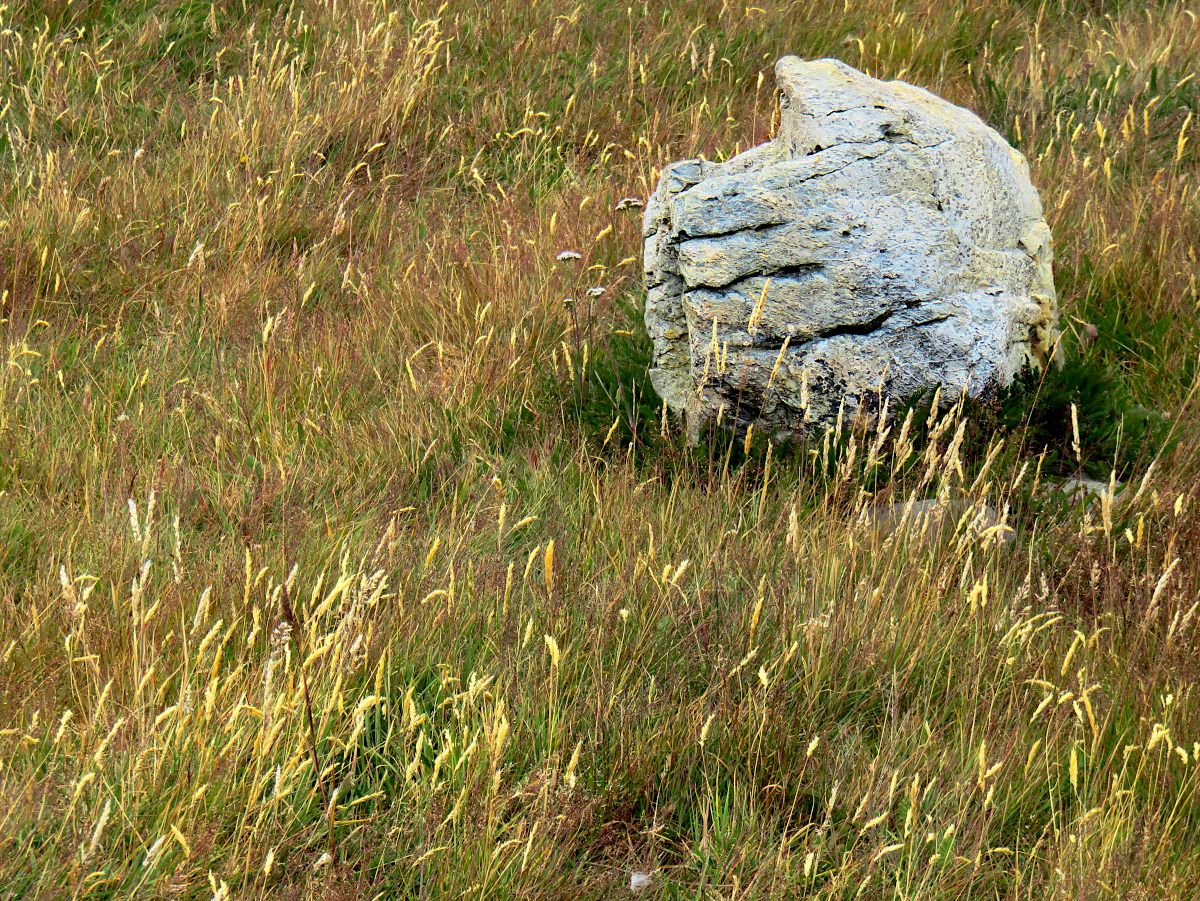
Approaching the island, the Idiots noticed specks on the shoreline. It soon became clear that they couldn’t all be driftwood. Could all of those birds… be penguins?! Yup, sure could! Tens of thousands of them all over the small island!
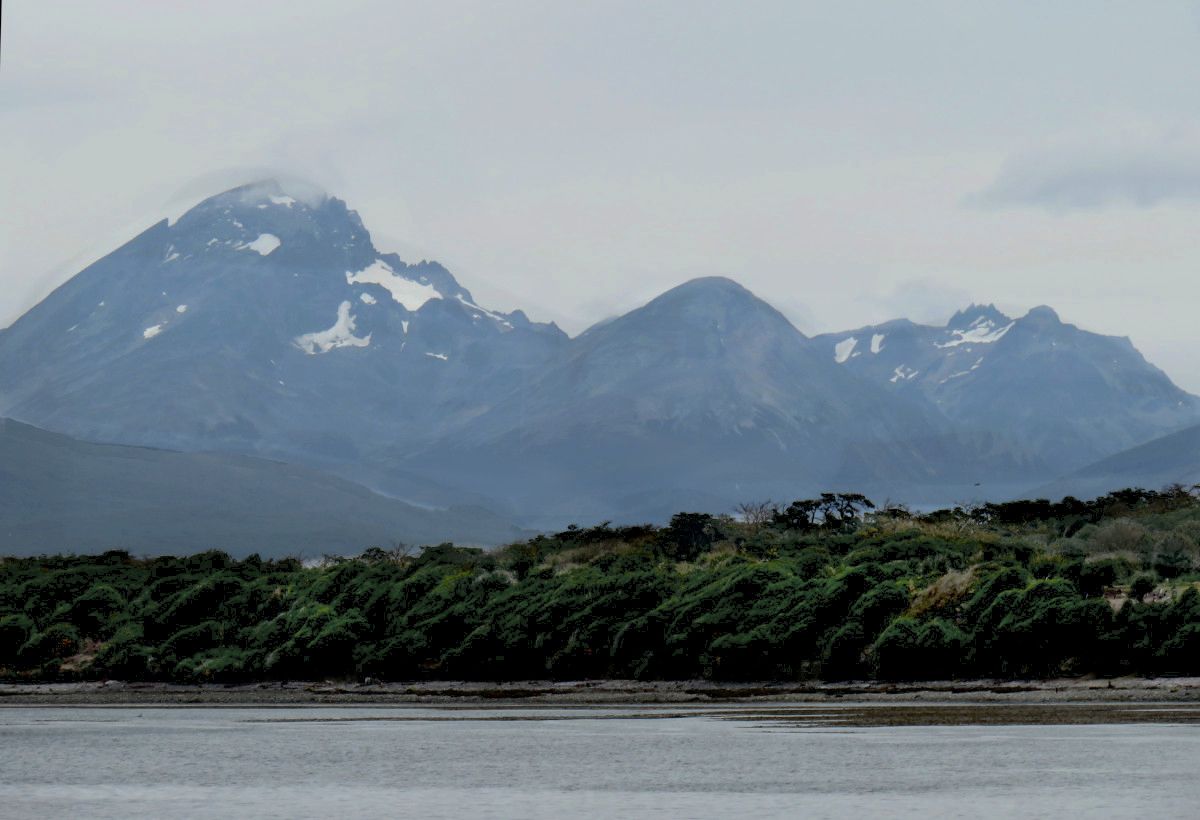
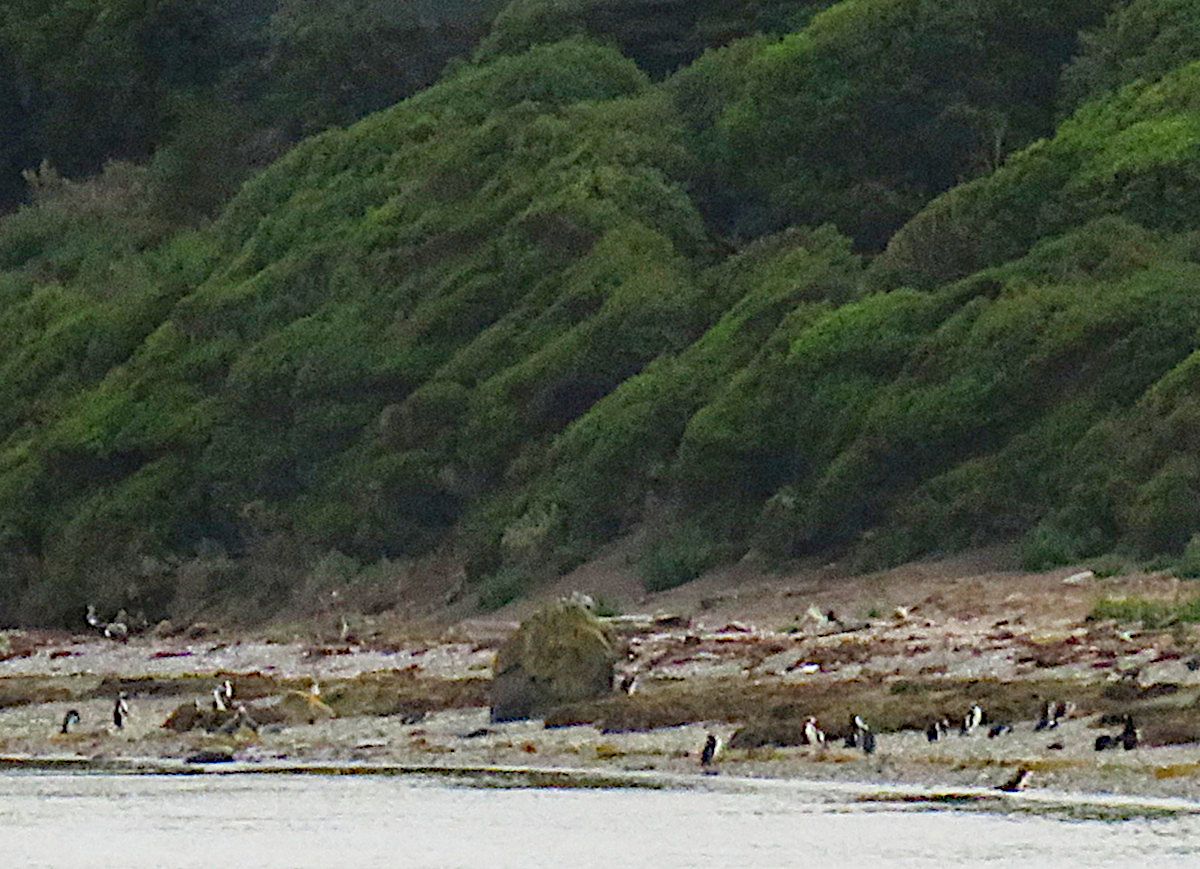
The previous episode covered their close encounter with the penguins. Following that thrilling experience, the group piled onto the excursion ship and settled in for the return voyage to Ushuaia. They thought everything after the penguin experience would be anti-climactic… but the remainder of the trip provided additional thrills.
Argentina and Chile fought over their shared part of South America from the earliest colonial times. Distinct borders were hard to establish in the rugged Andean countryside, and as the mainland terminates in a complex collection of islands – ownership became a matter of occupation and interpretation.
It was probably inevitable that when Argentina started to market Ushuaia as “The Southernmost City in the World” and its access to Tierra del Mundo – the End of the Earth where the road literally ends… that Chile would try to outdo them. Ushuaia is on the Argentine north shore of the Beagle Channel. Chile built a naval base on the south shore, on Isla Navarino, and named the resulting small village Puerto Williams. Chile claims THEY have the southernmost city in the world.
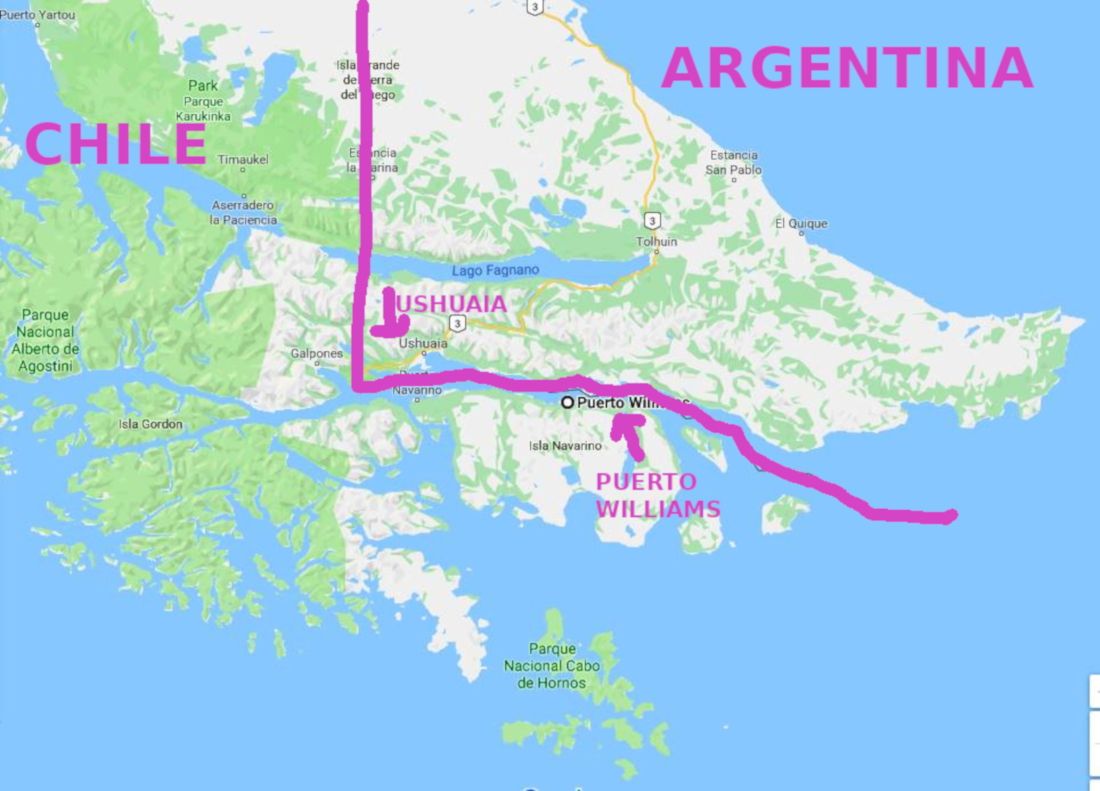
It’s a stretch. Even lumping together the military personnel and civilians, Puerto Williams still has fewer than 3000 residents. Maybe they should go with “Southernmost Town in the World.” Its only reasons for existence are the small naval base and as a jumping-off point for adventurers to enter the alpine wilderness of this last remote section of the Andes. The two municipalities are only about 30 miles apart, so the Idiots considered visiting Puerto Williams. It was an expensive expedition – and unless one is backpacking into the mountains, there is really no reason to be in Puerto Williams. They decided that this view from the channel was sufficient.
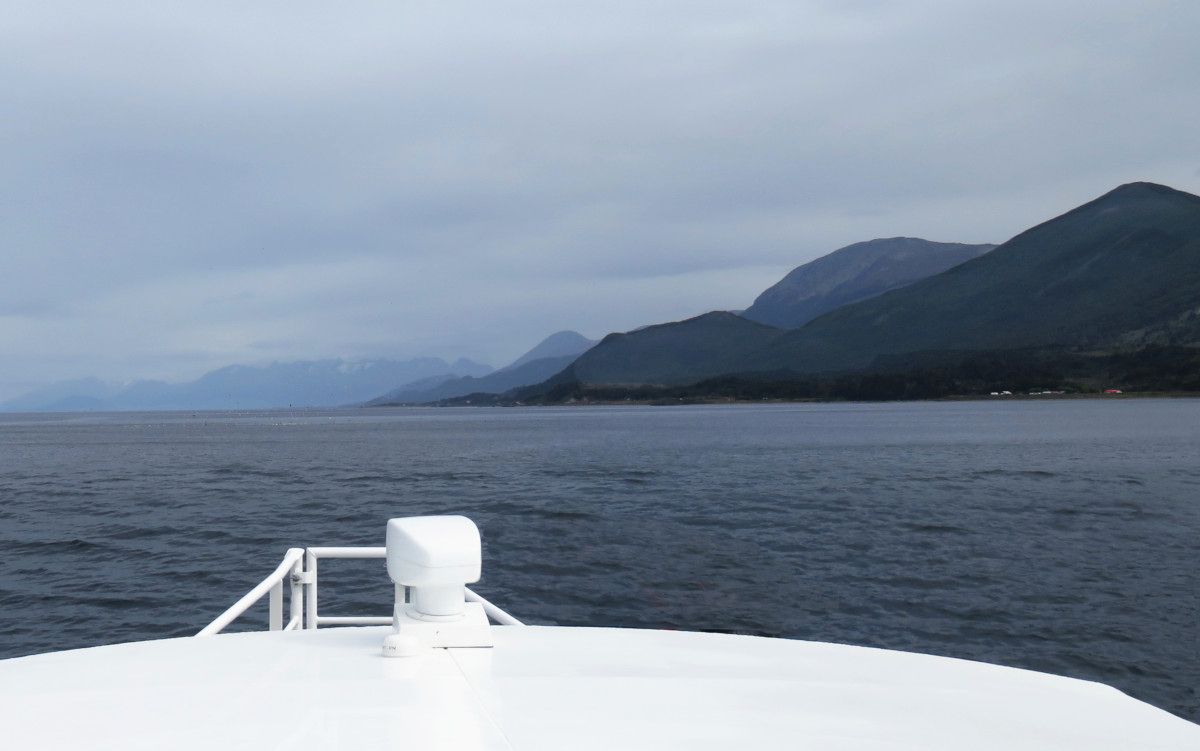

Nearing Ushuaia, a lonely lighthouse graces a rocky island – the home of an amazing cormorant rookery. It is understandable that, from a distance, many thought they were seeing penguins. The imperial cormorant shares the striking black-and-white coloration of their larger flightless cousins.
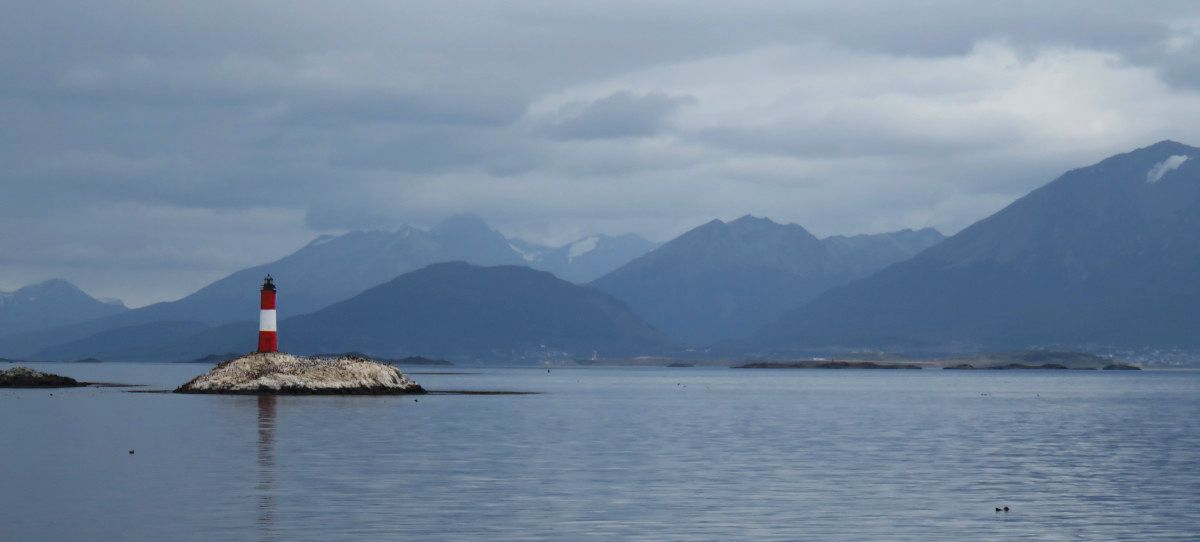
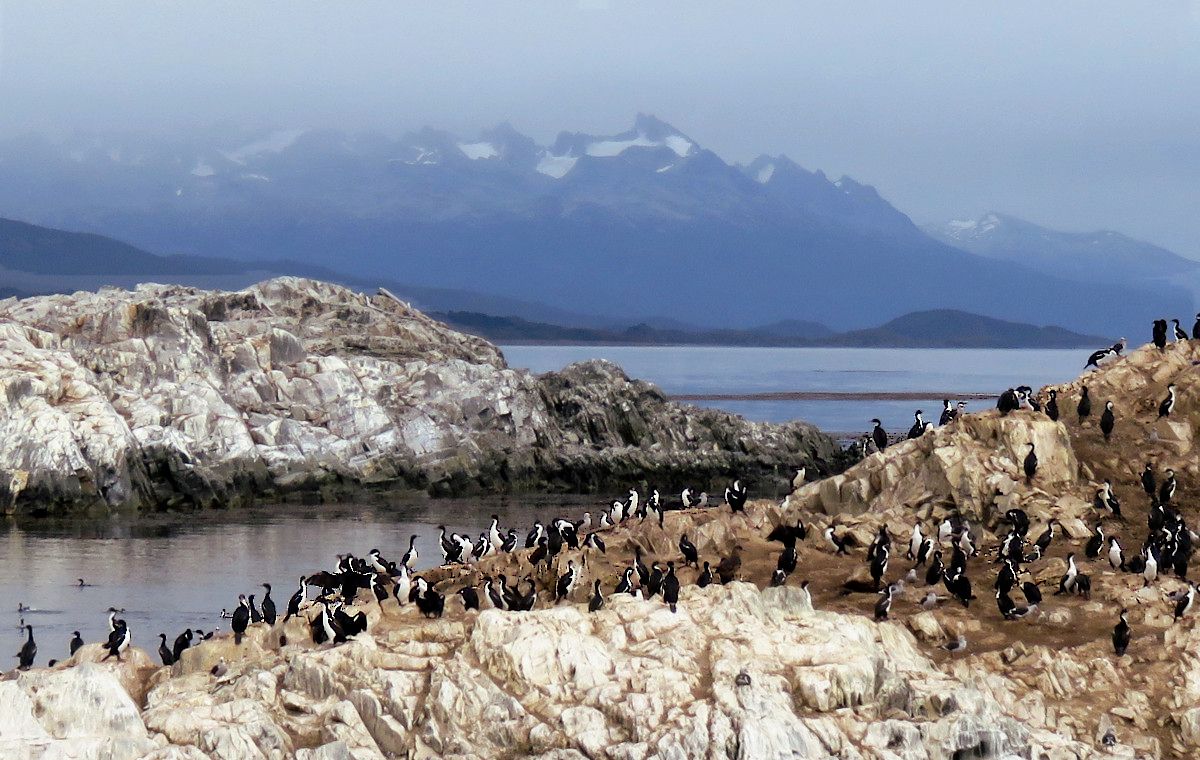
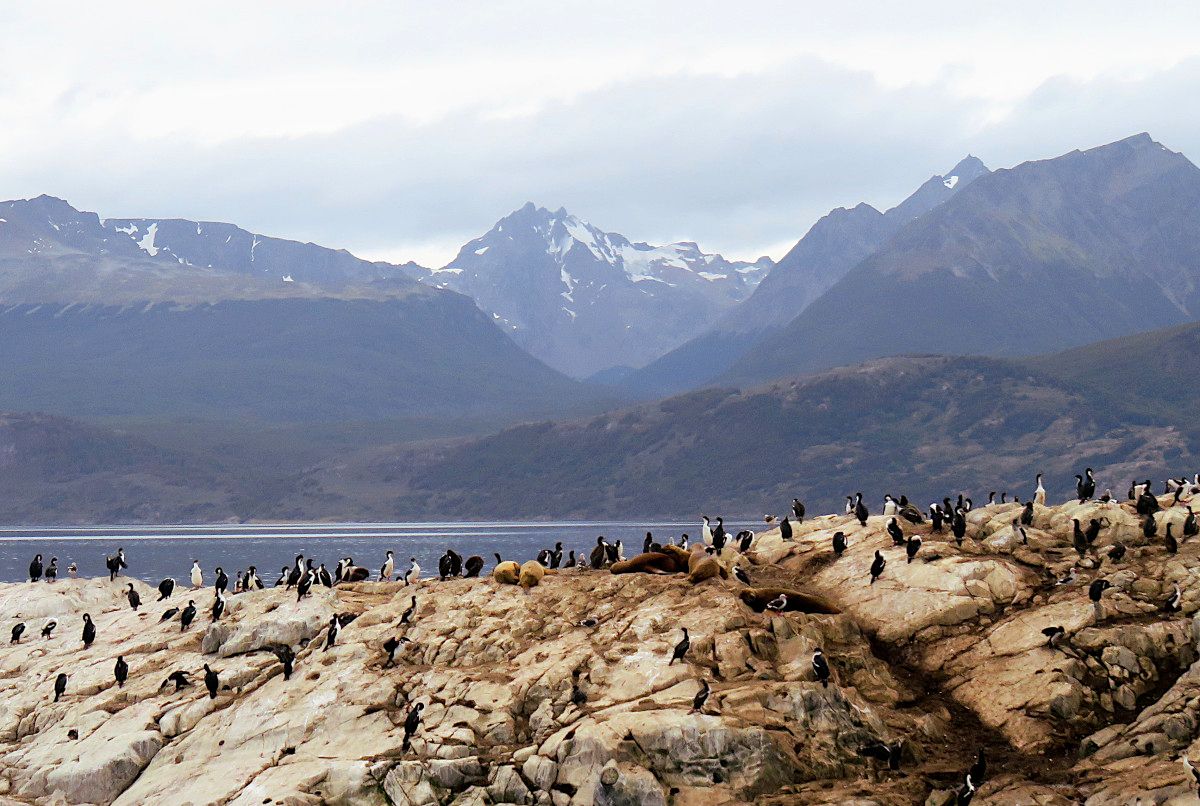

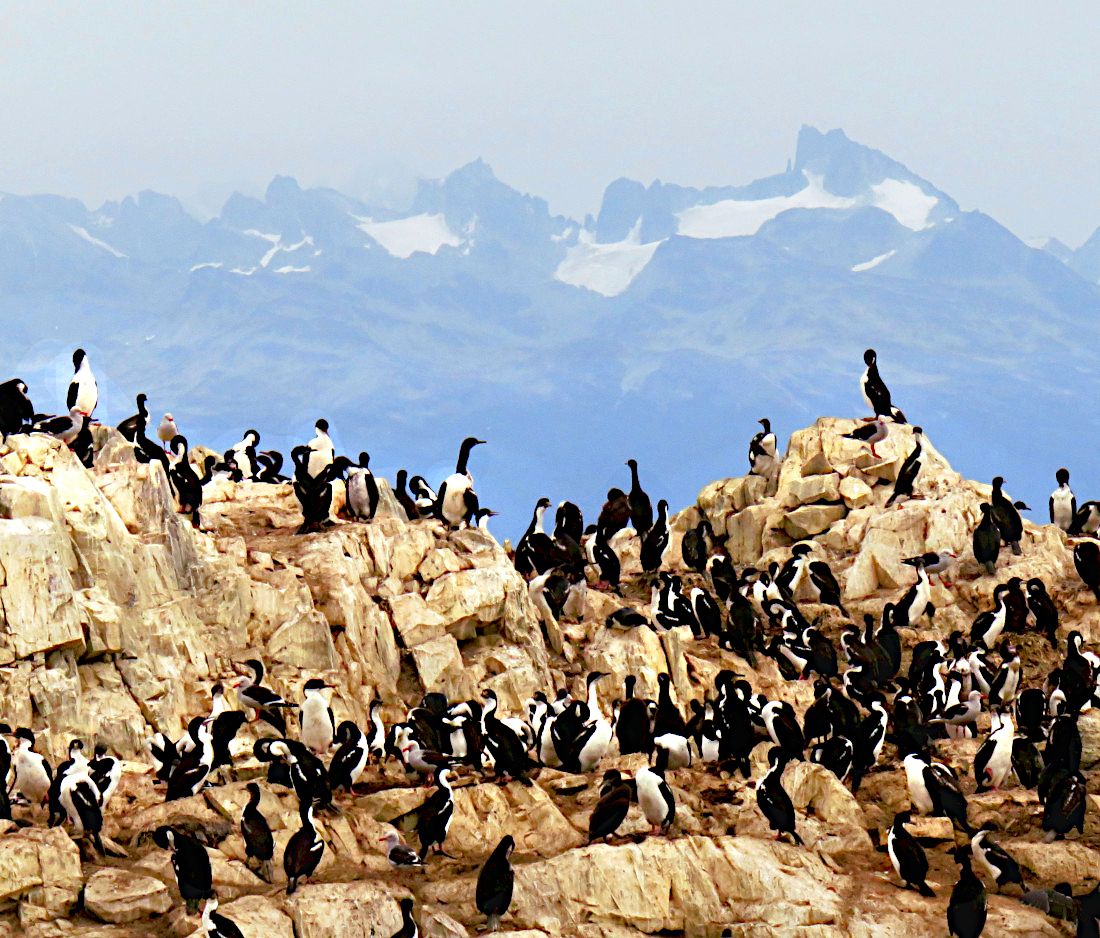
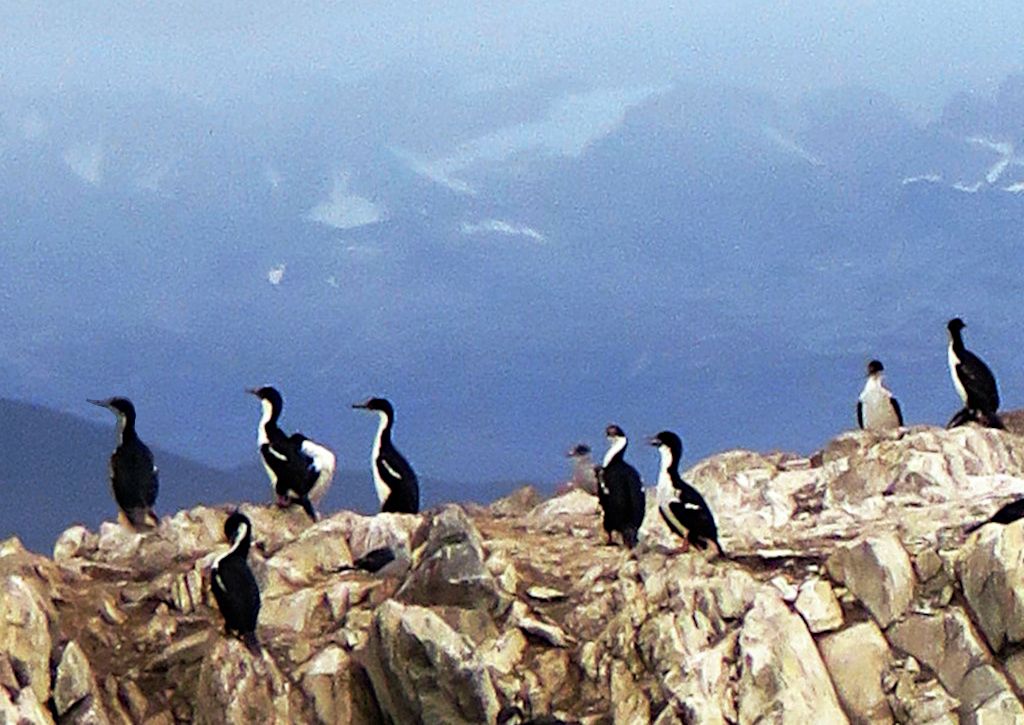
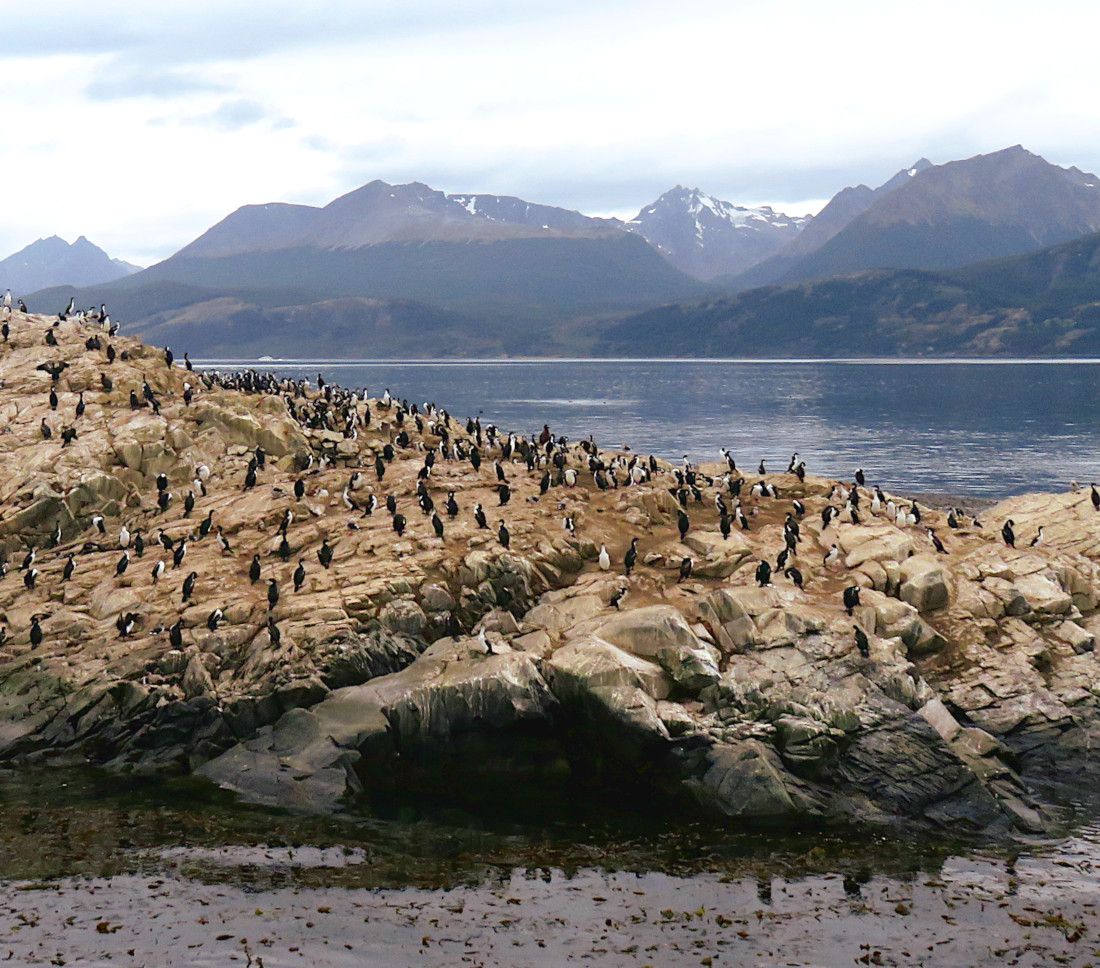
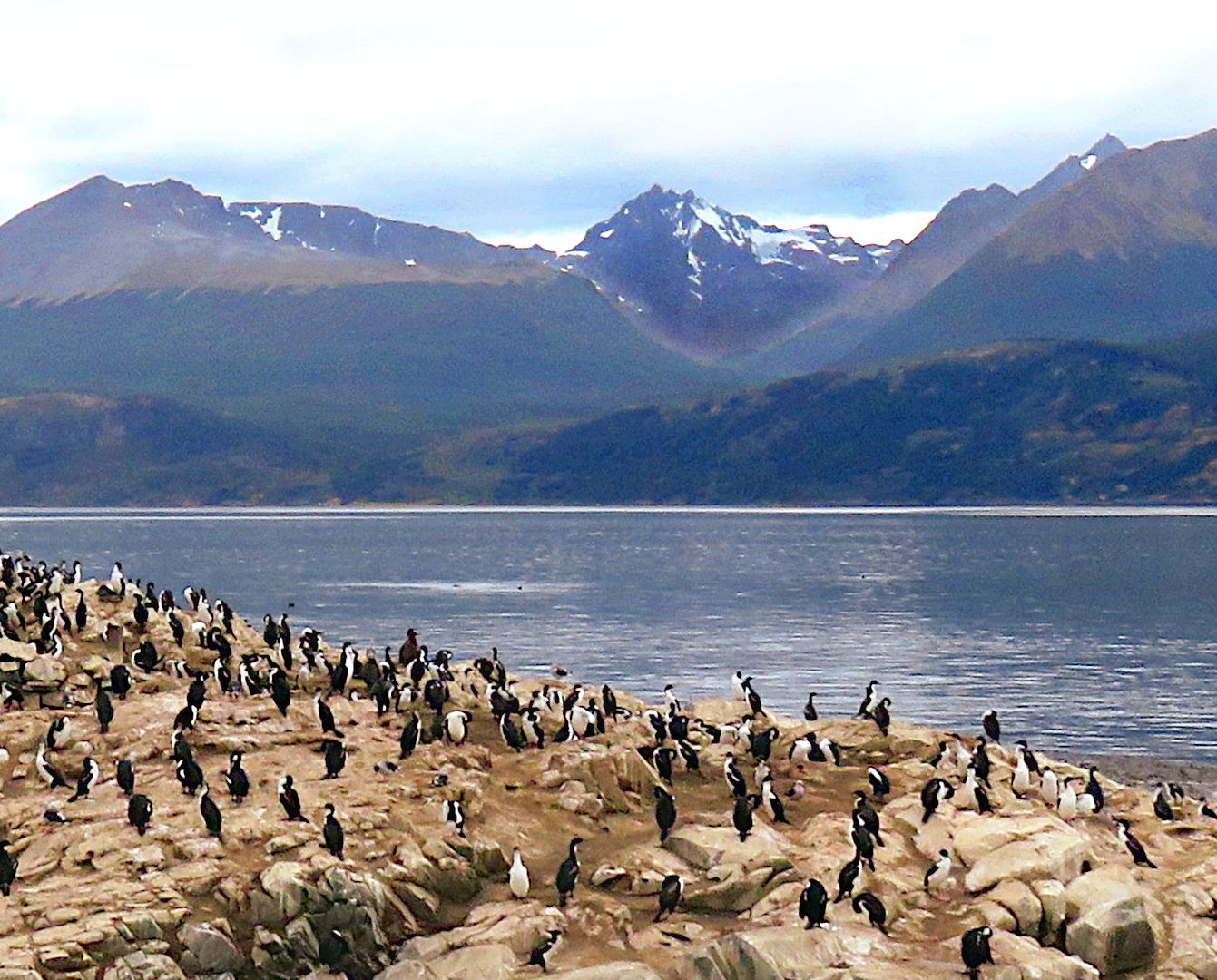
On the lighthouse island, the Idiots saw a few sea lions – the last attraction promised in the brochure. Nice seeing them… but kind of underwhelming.
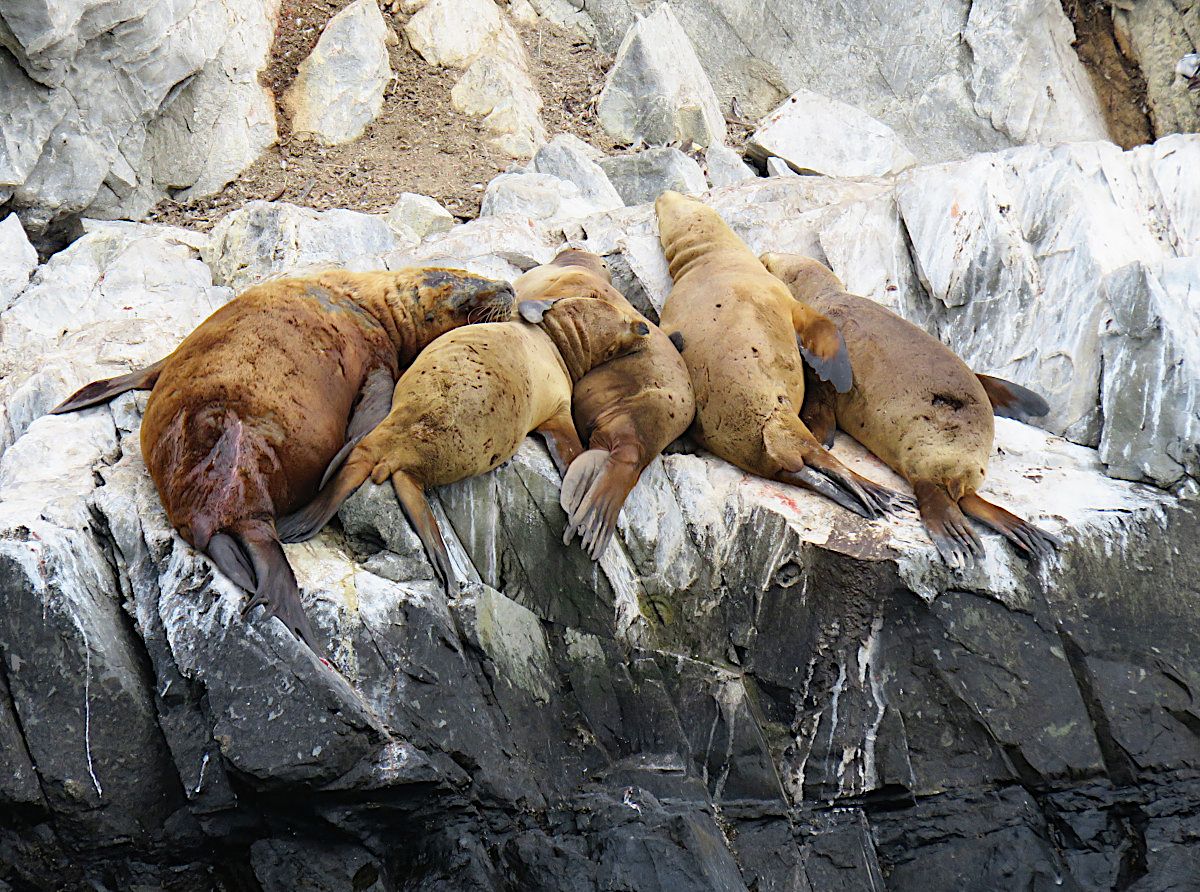
Leaving the lighthouse, it became apparent the ship was heading for a smaller white-rock island. As they got closer, several things became obvious:
1. The rock is not naturally white – that is all bird poop.
2. It is a good thing that photography has not successfully integrated smell-o-vision because
3. There are a whole lotta sea lions on that rock – and they eat a lot of fish – and the stink is something special!
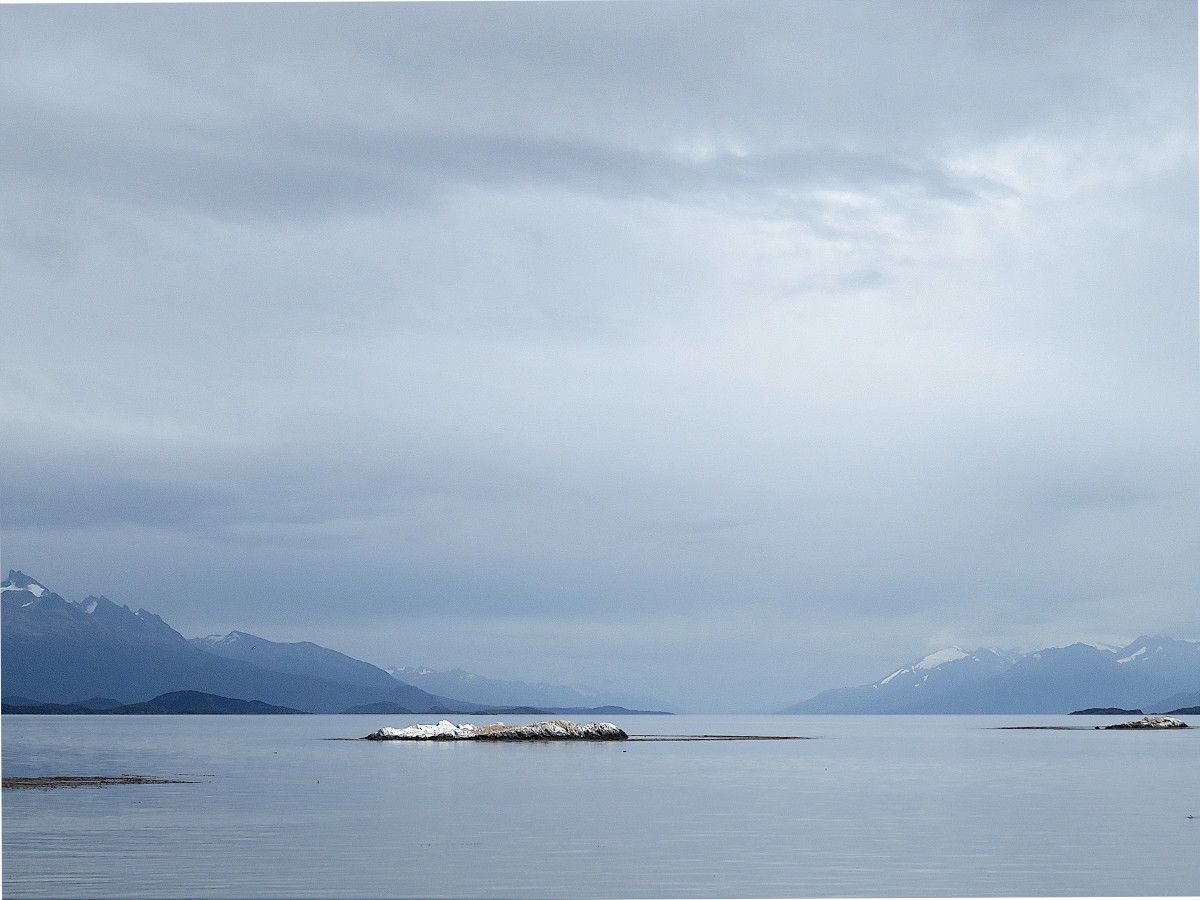

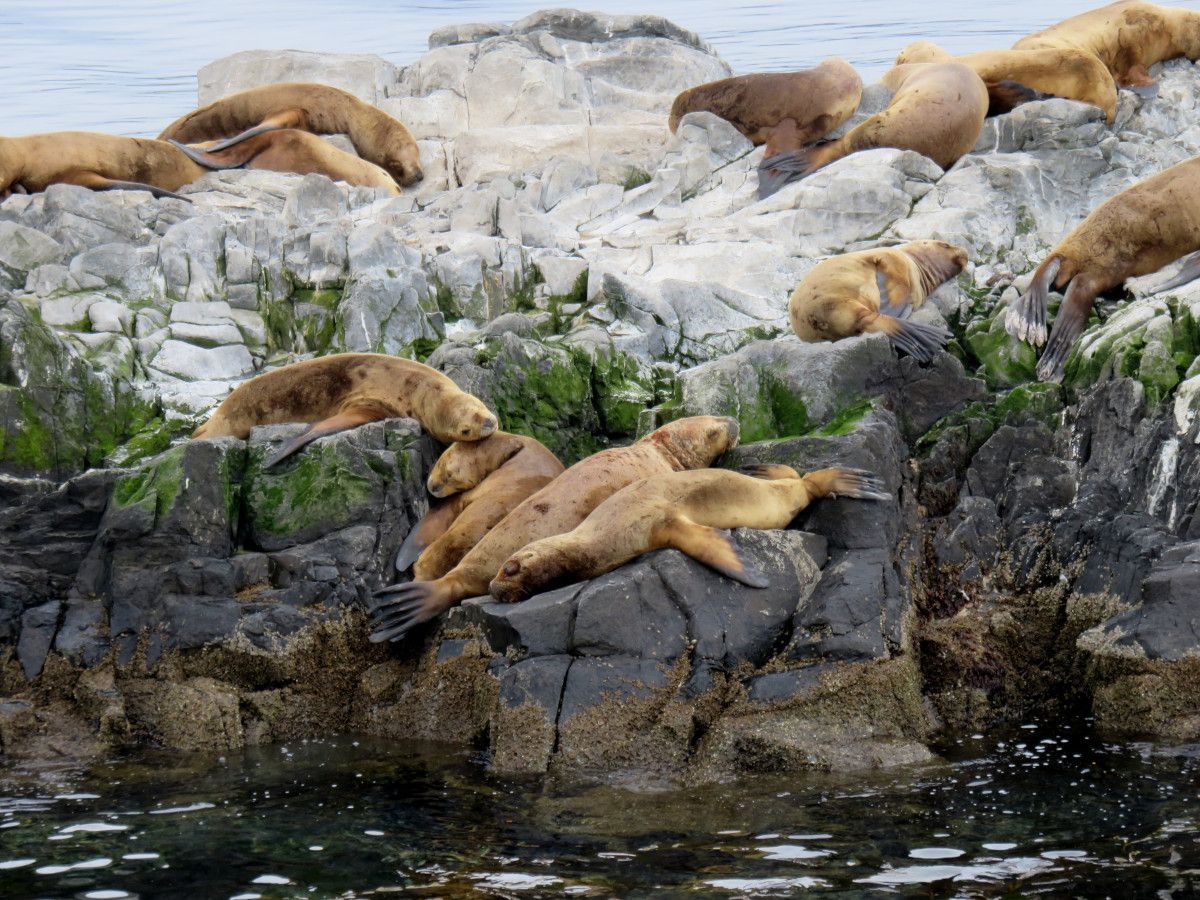
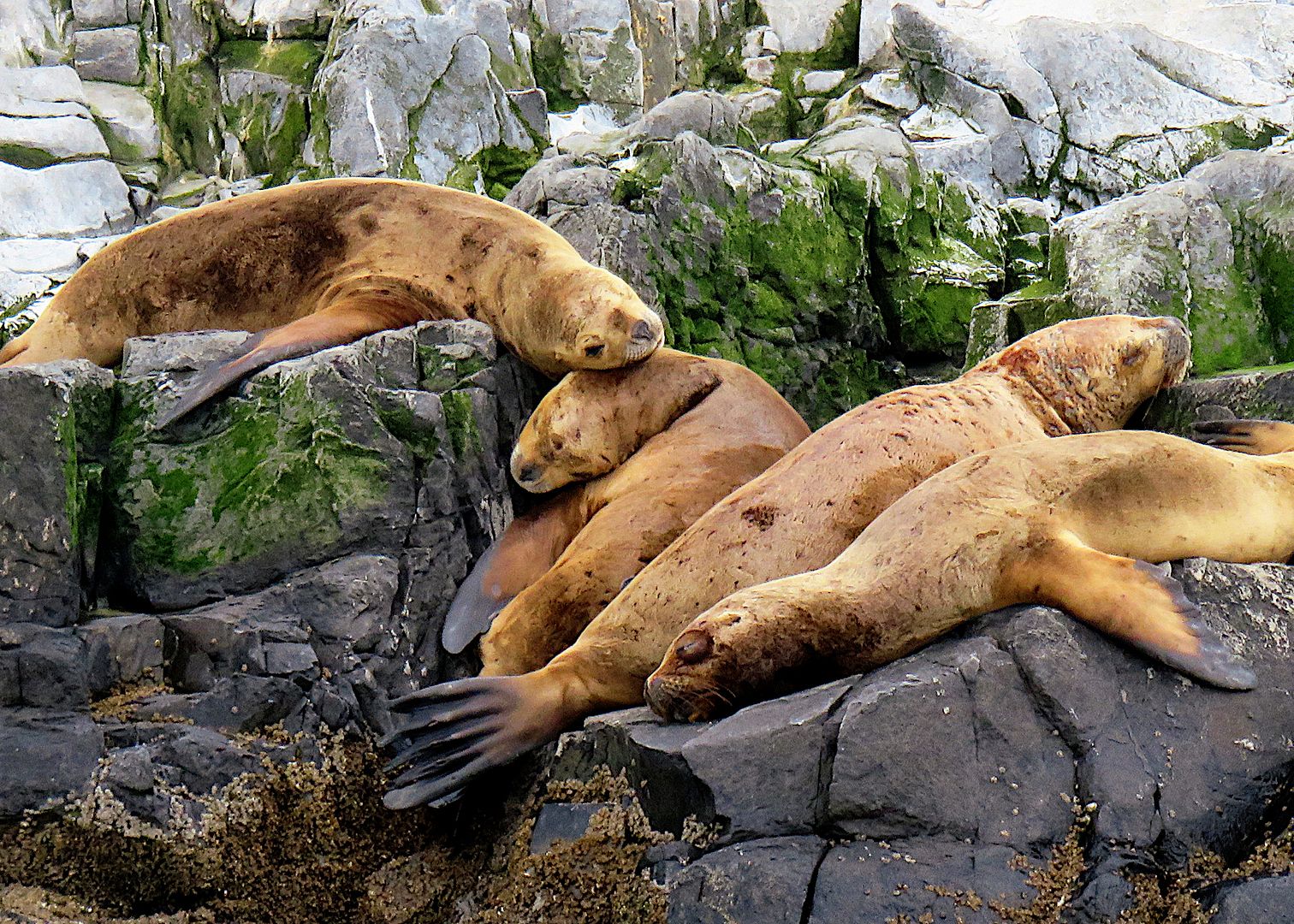
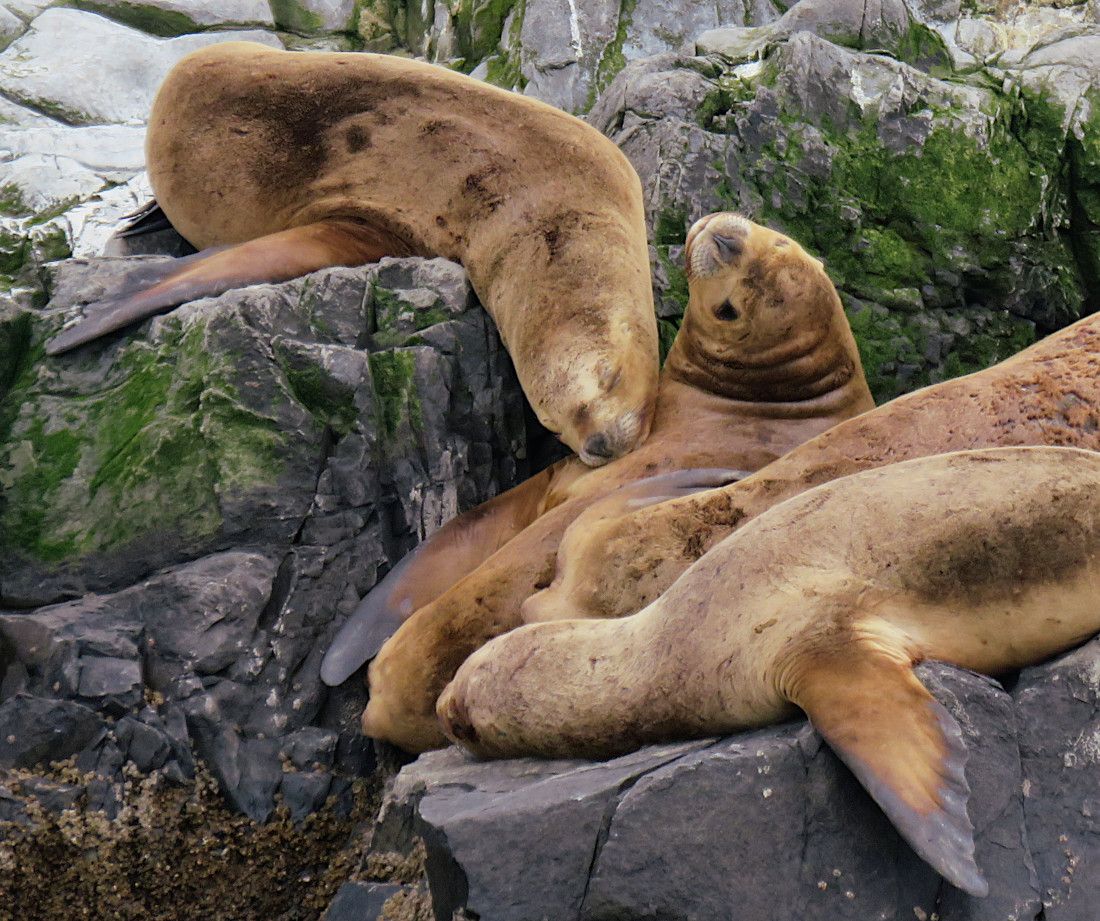
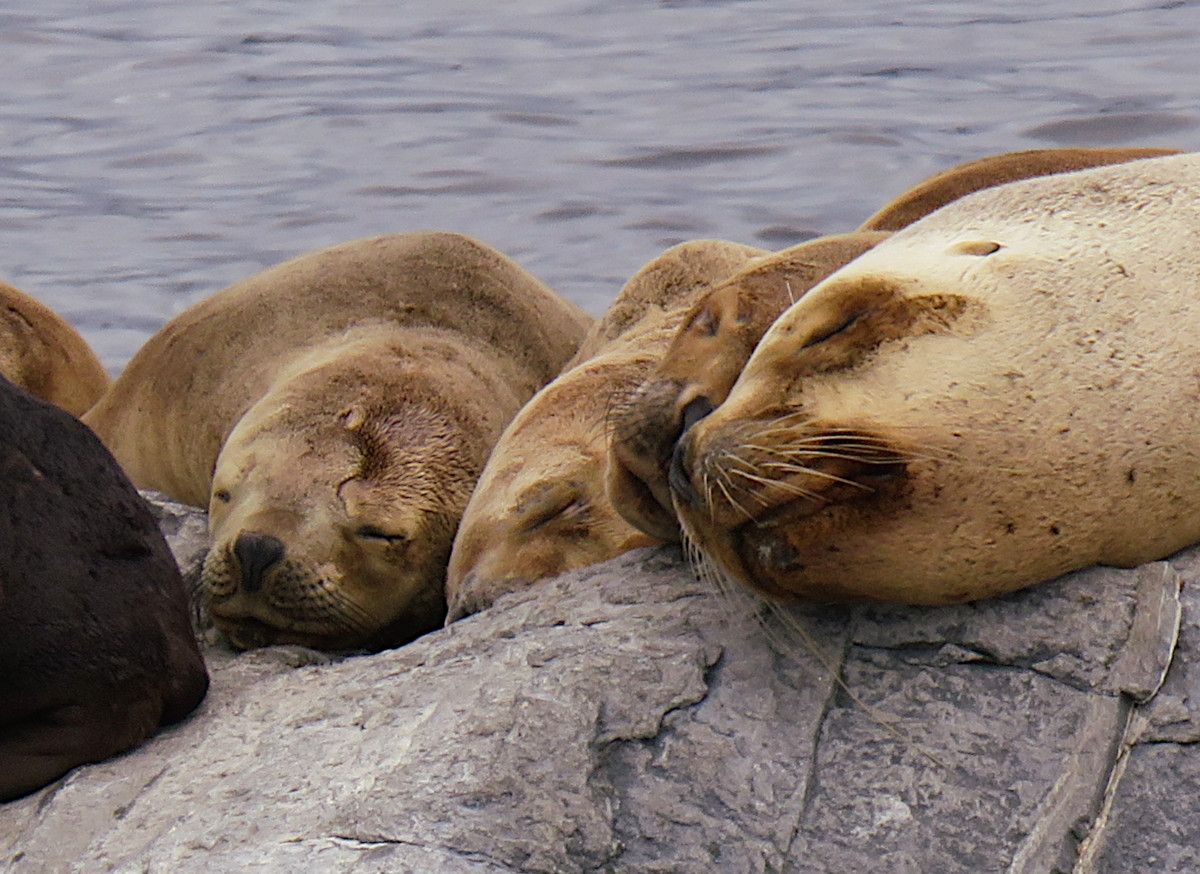

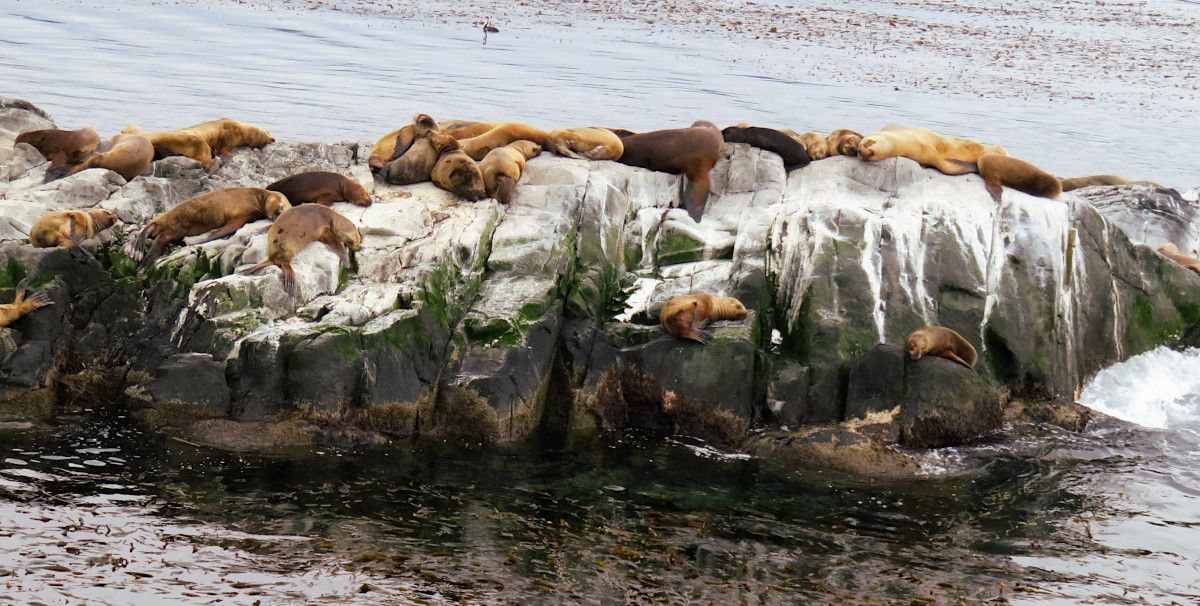
As they headed toward the port, the Idiots noticed several large flocks of kelp gulls, with a few dark Chilean skua mixed in, apparently feeding.
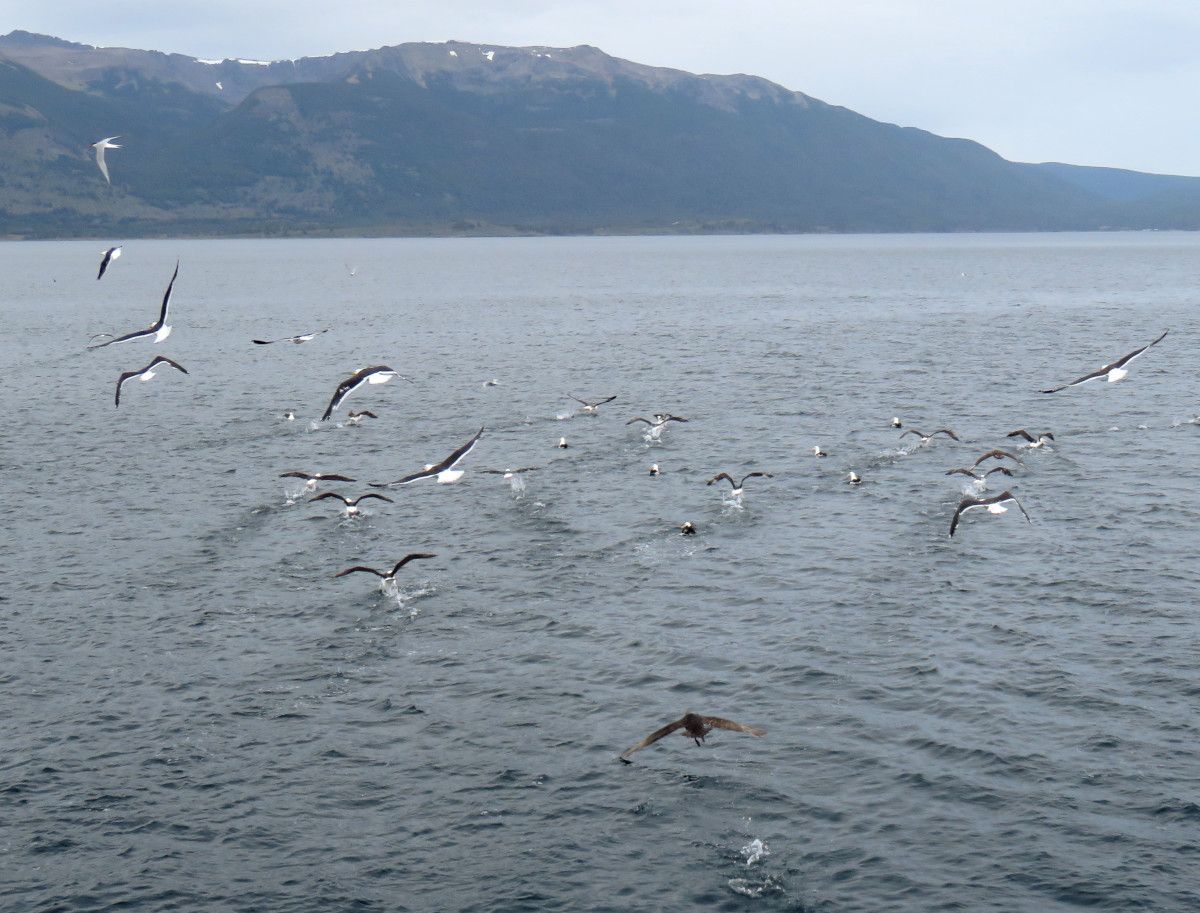
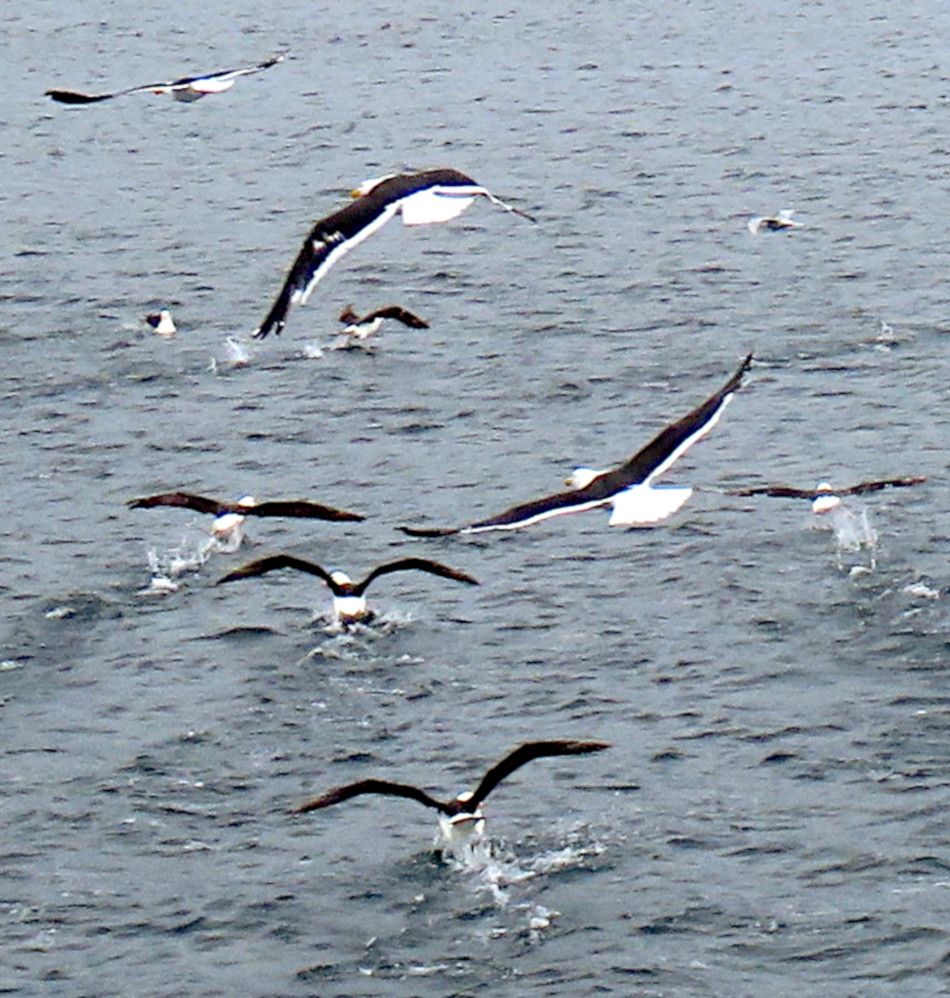
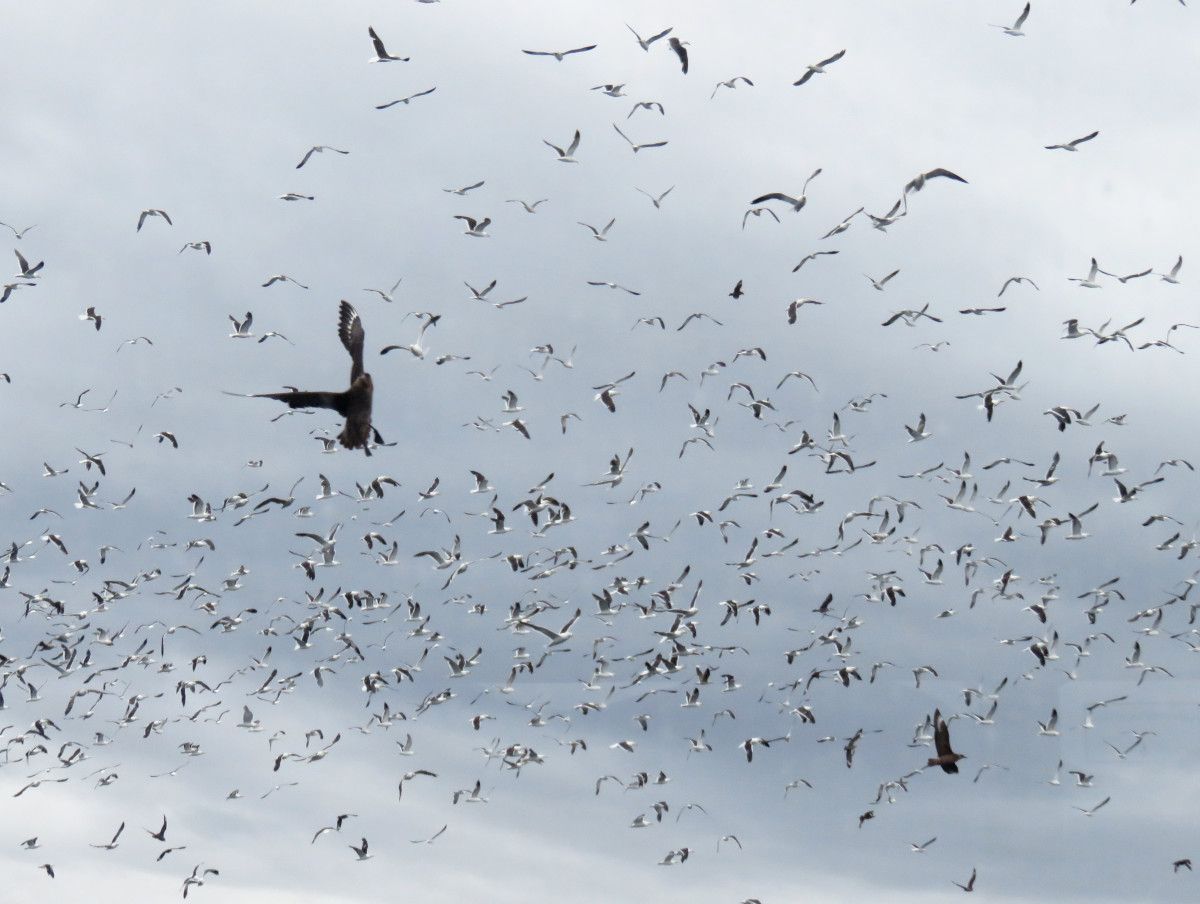
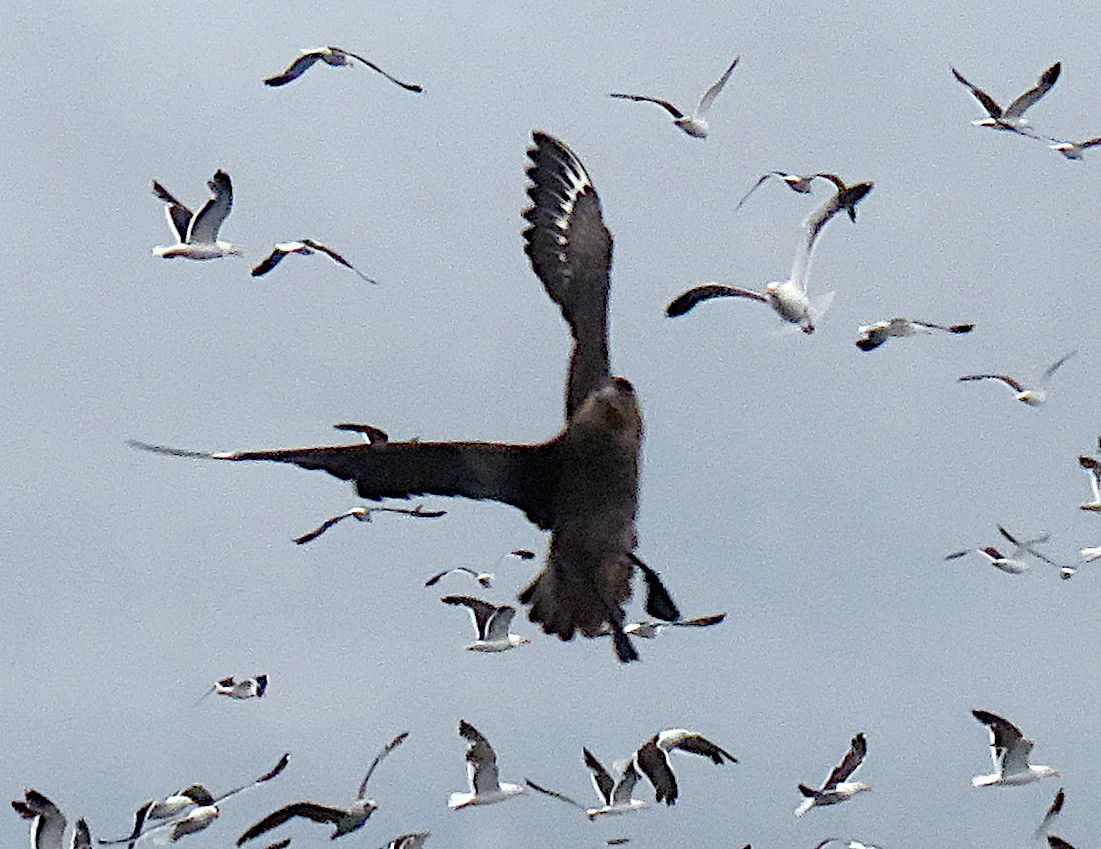
Flocks of feeding seabirds indicate an abundant supply of small sea creatures. If there are large flocks of birds feeding, there may be marine mammals drawn to the same area to feed. Might there be whales out there?
When the ship swung away from the route back to the port, the Idiots started to look for spouts. Thar’ she blows!
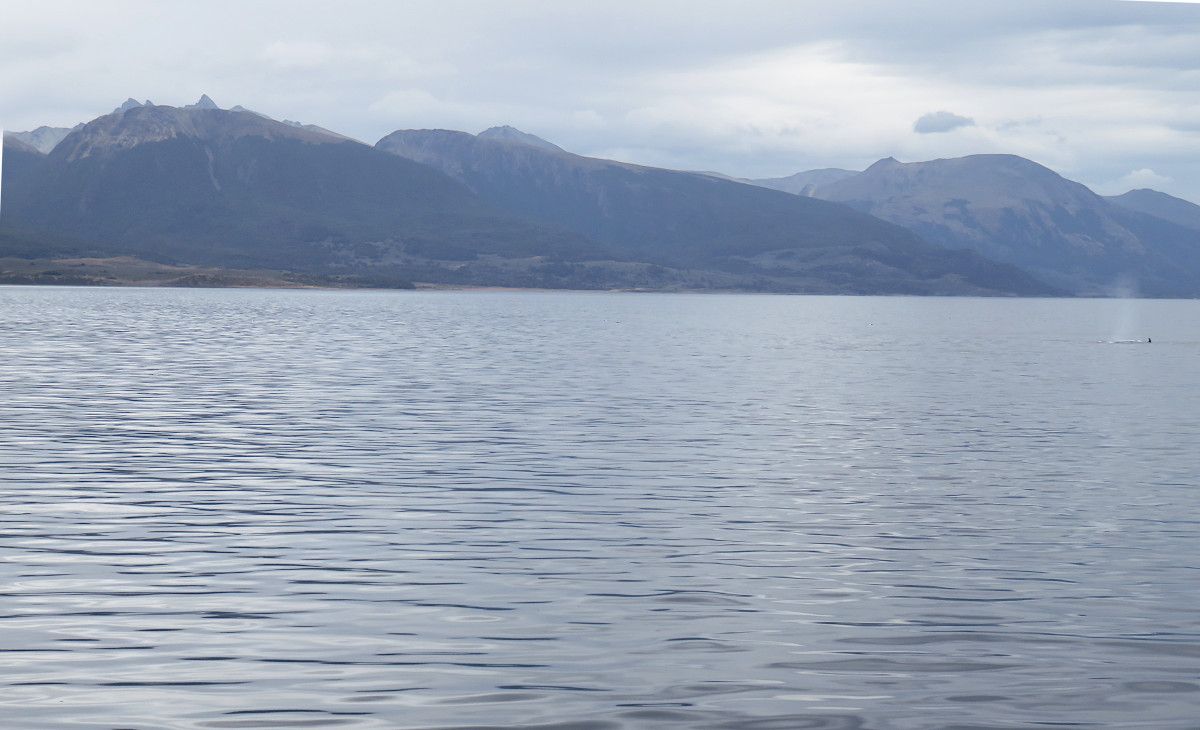
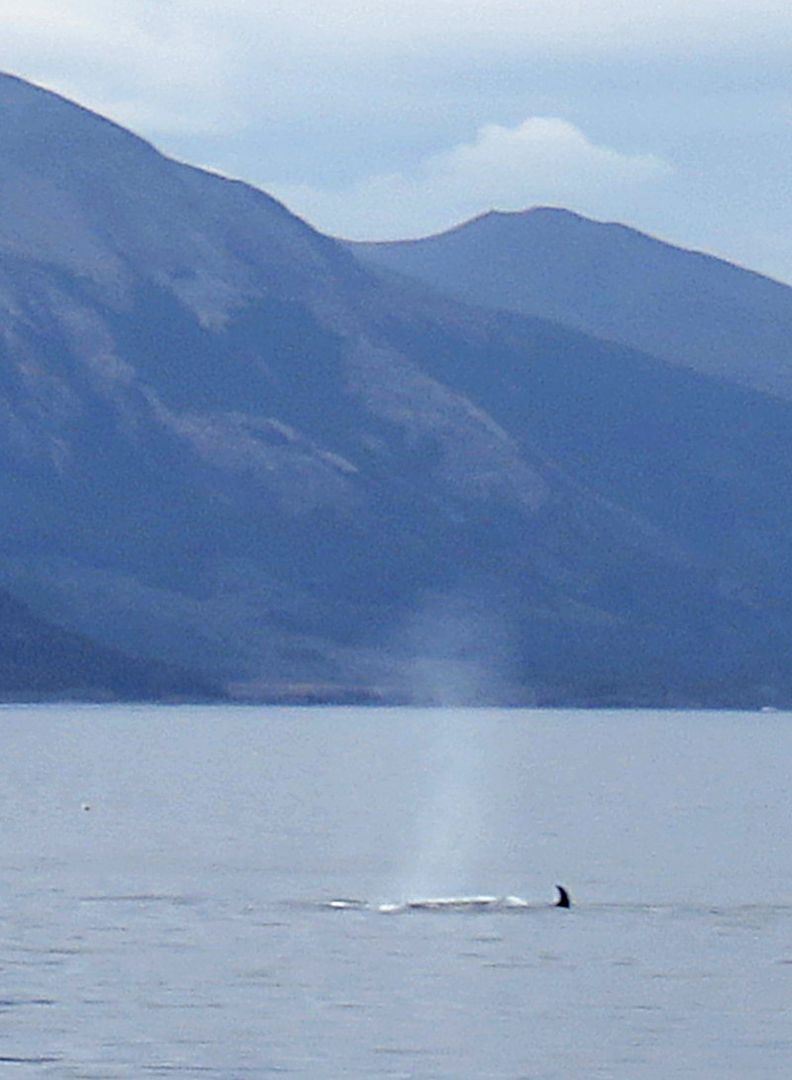
Whales are never promised on these excursions, but they certainly are welcome additions! Though not close to the ship, it thrilling to observe what was clearly a large pod of gray whales.
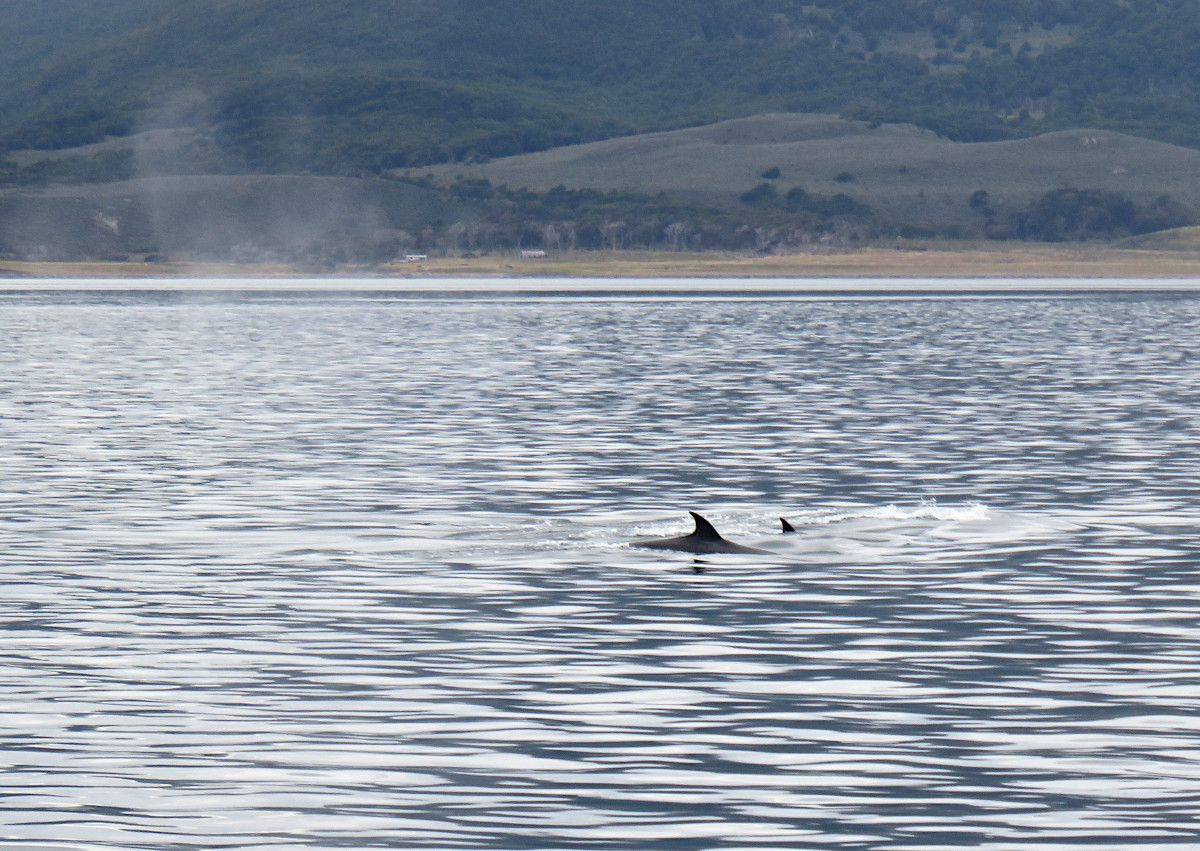

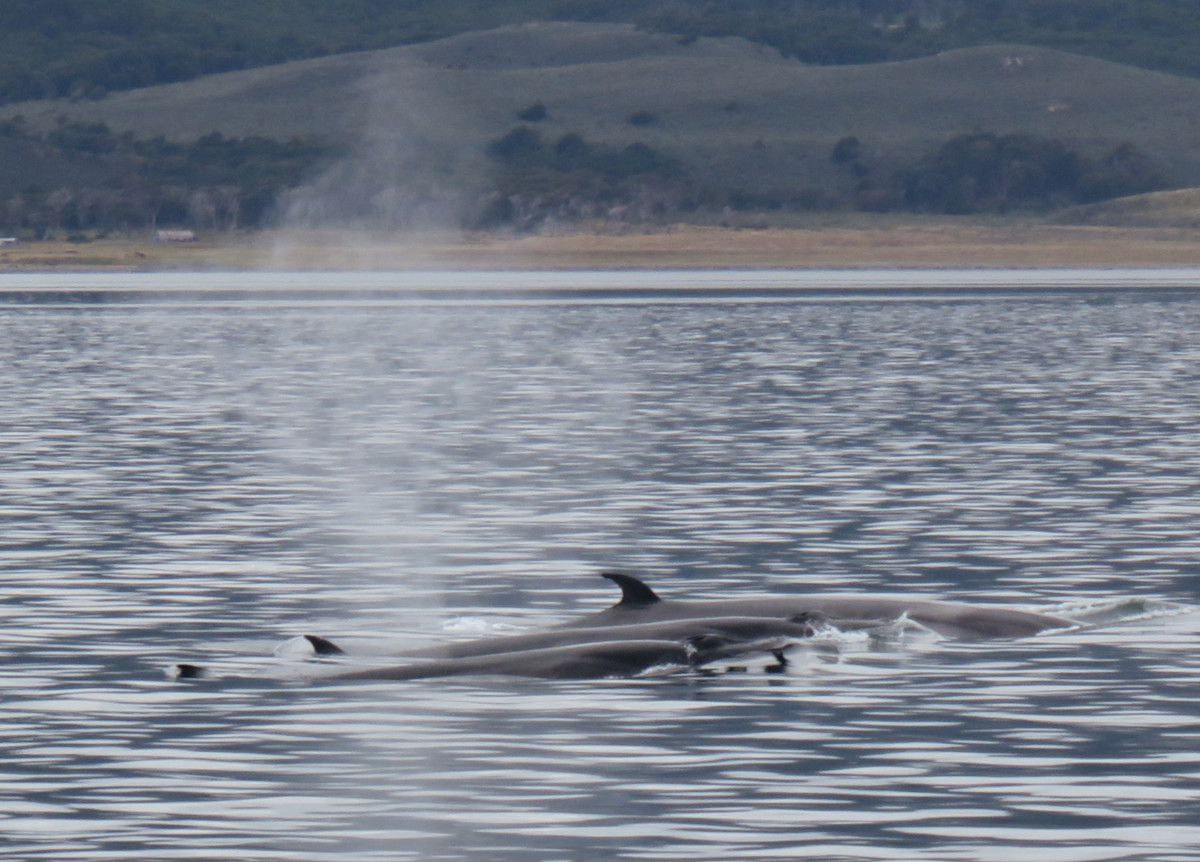
After such sensory overload, the Idiots were ready to head back to find some good seafood and a warm bed in their snug little apartment at the end of the earth.

